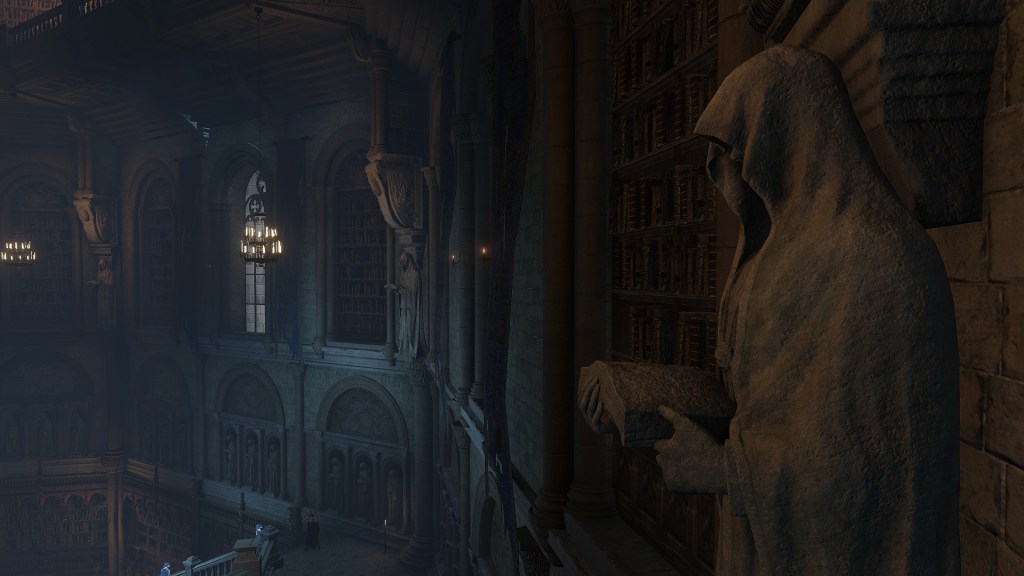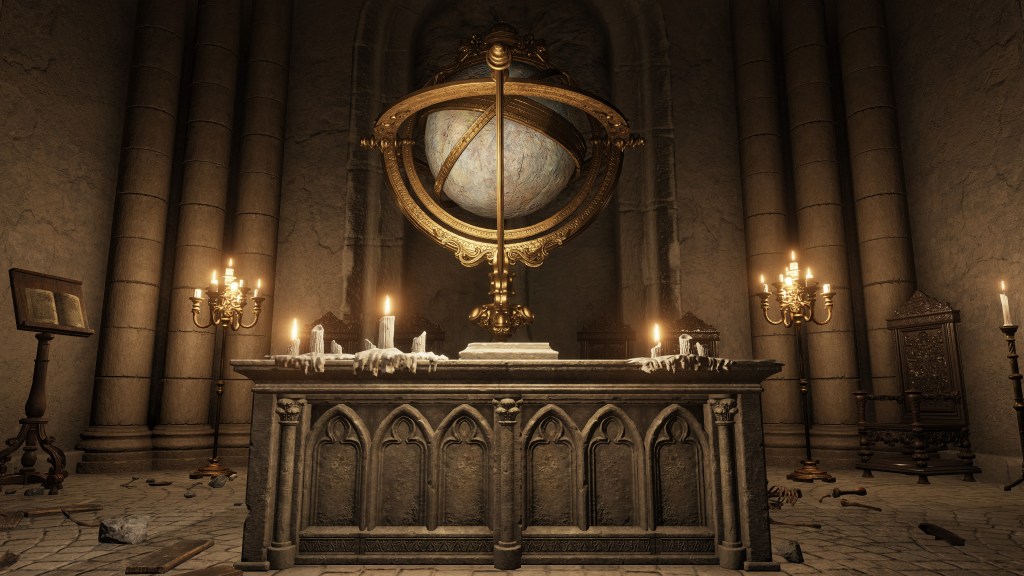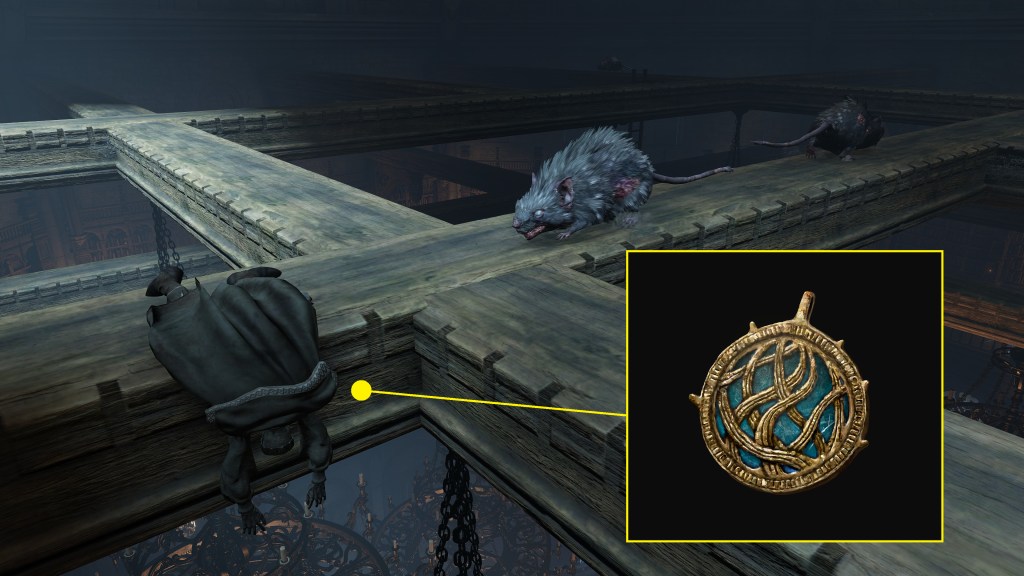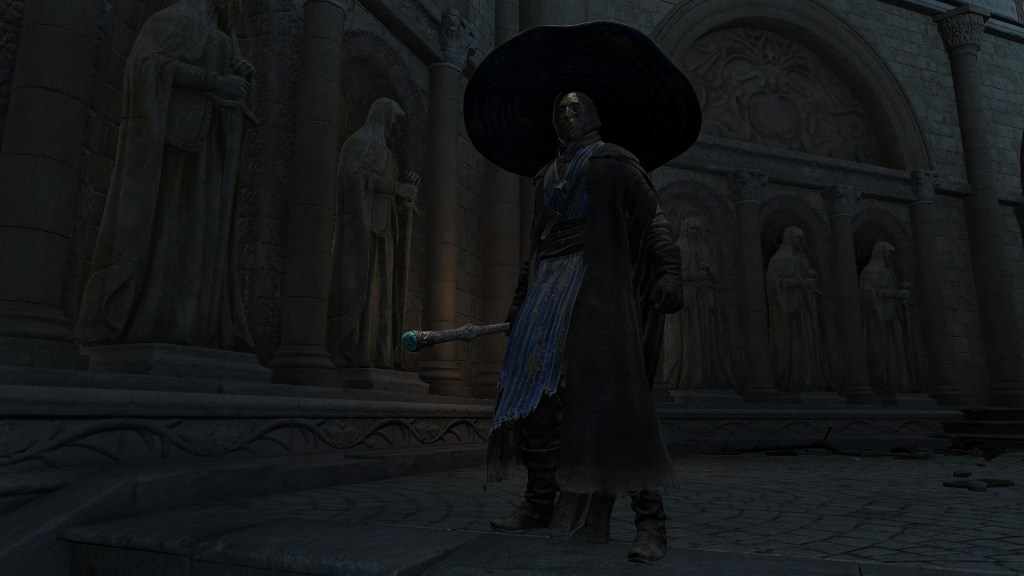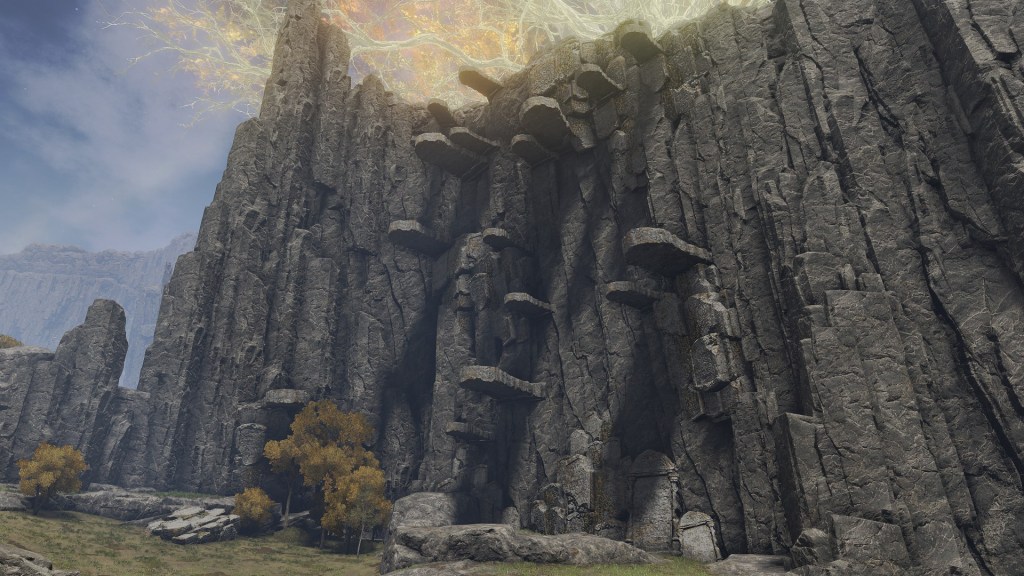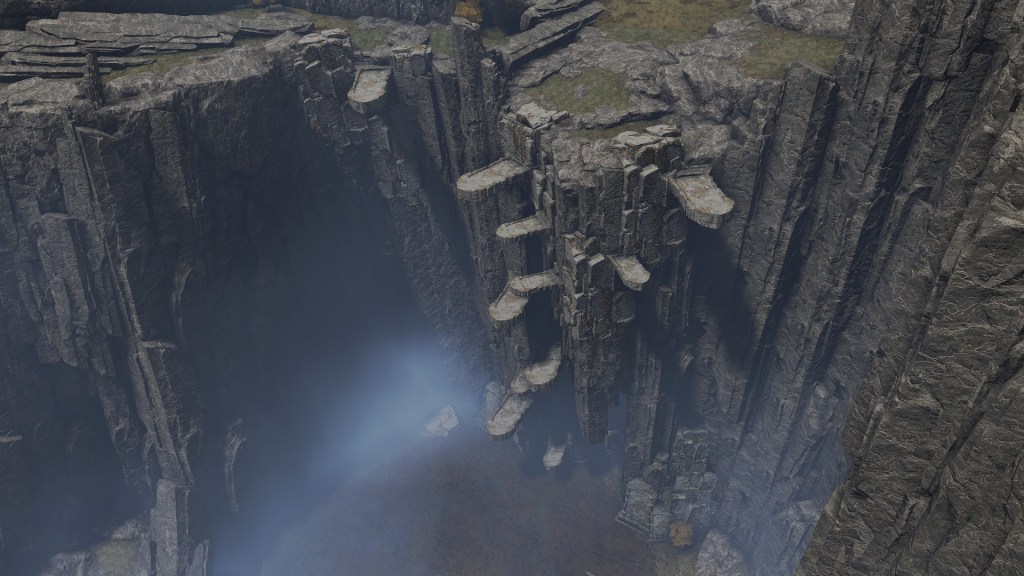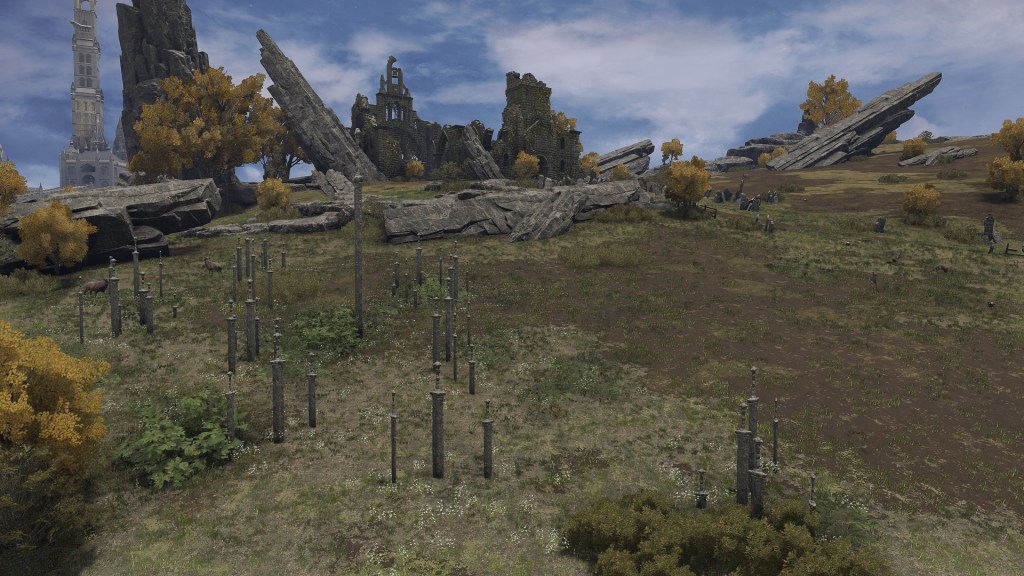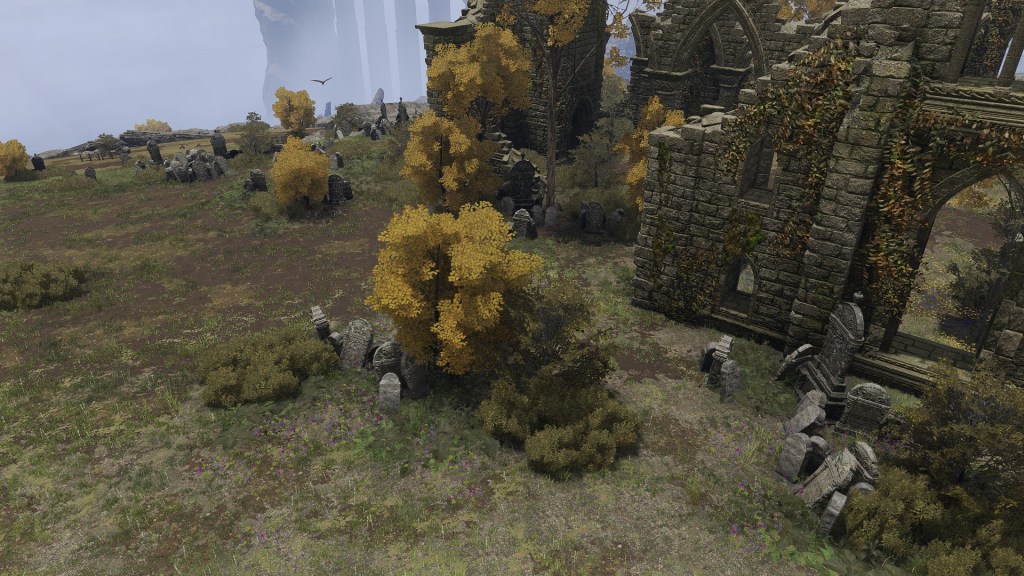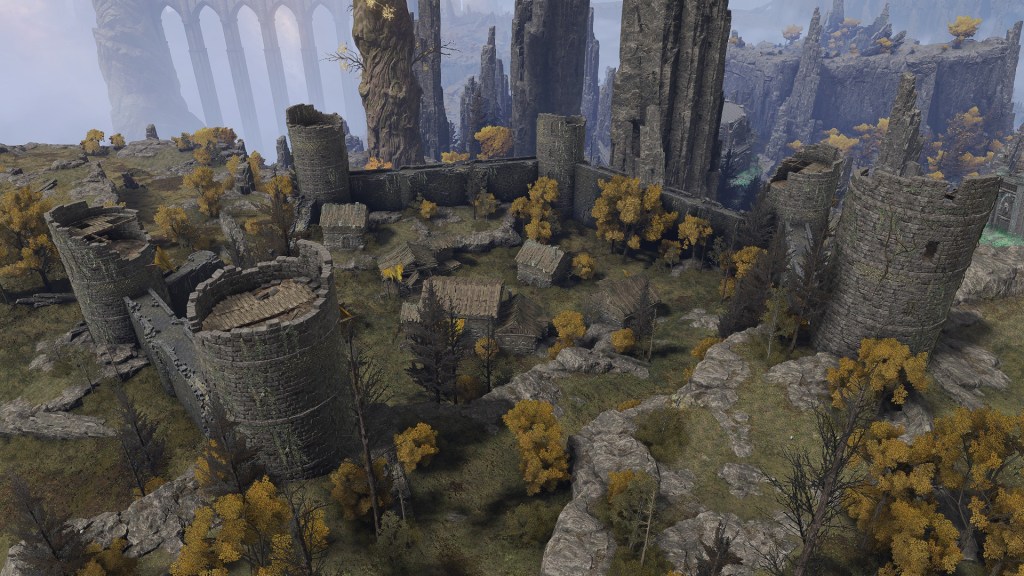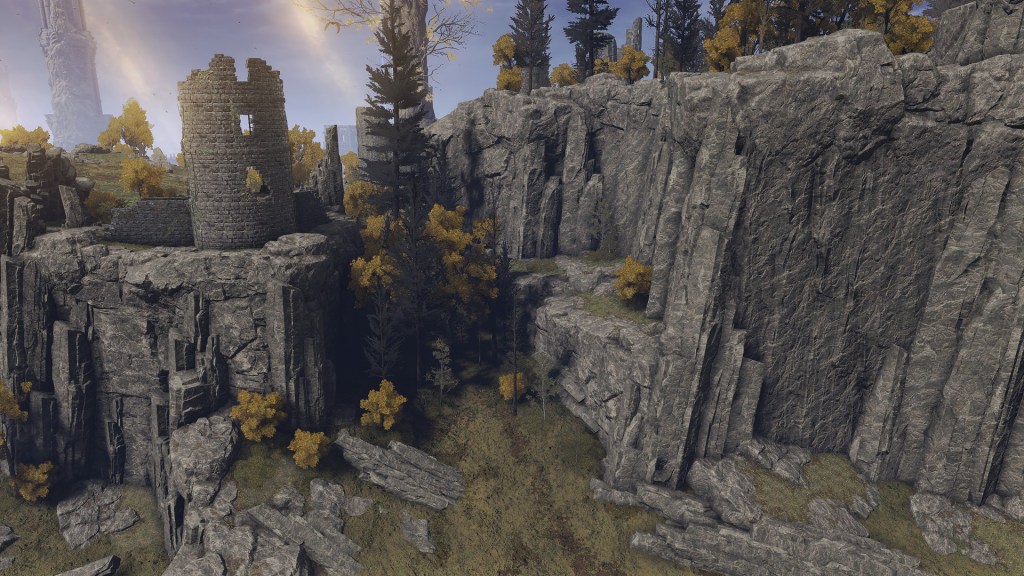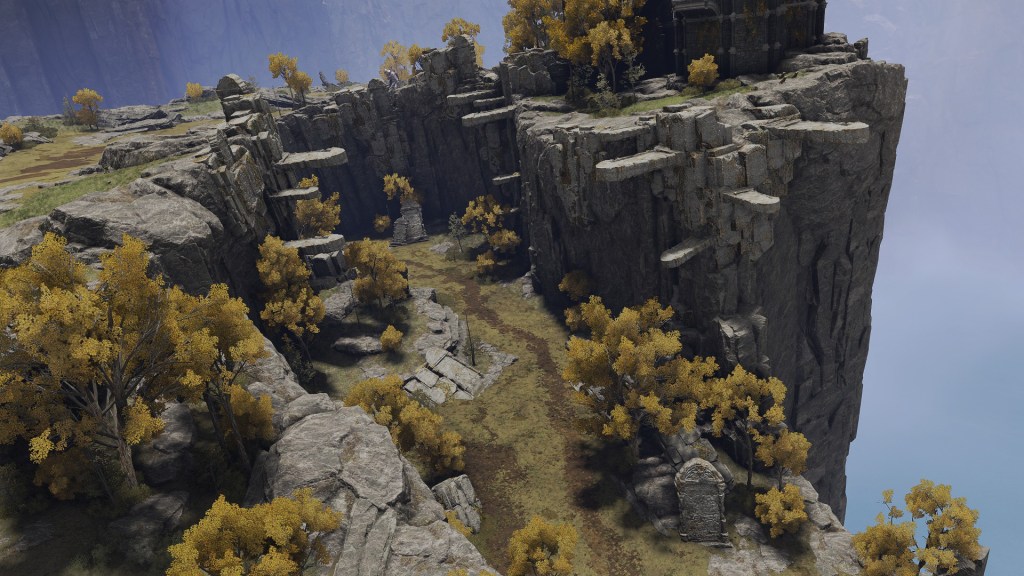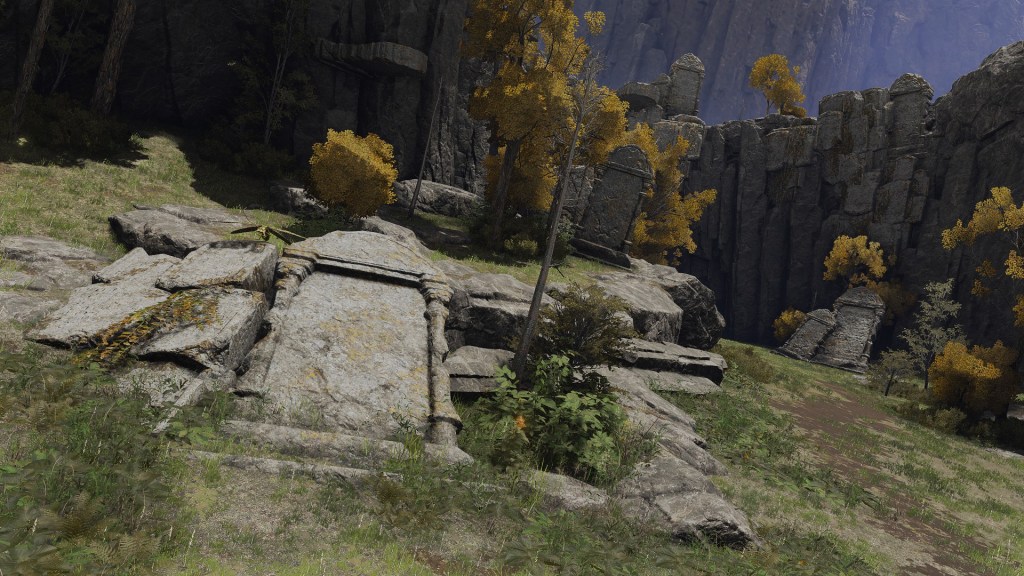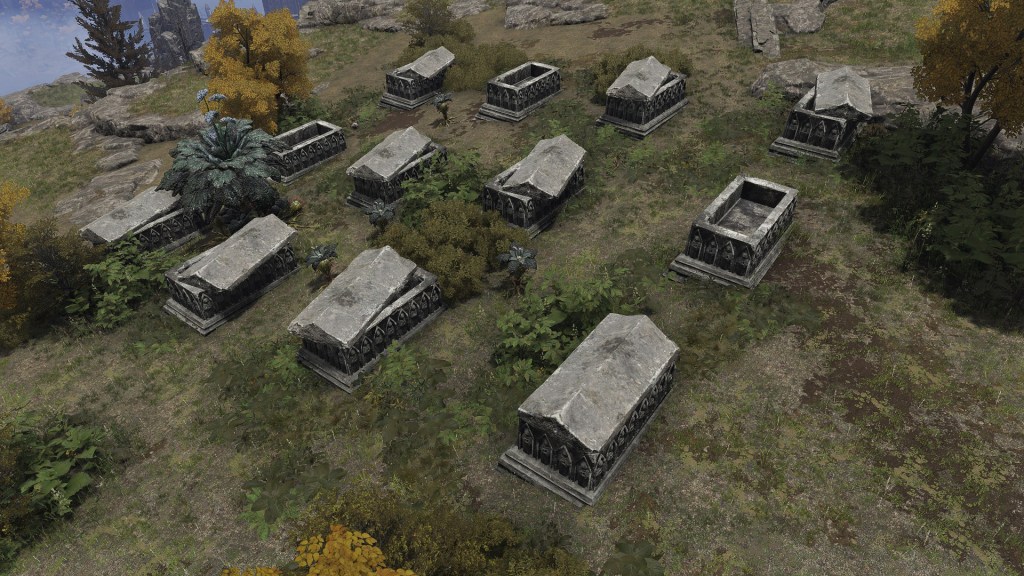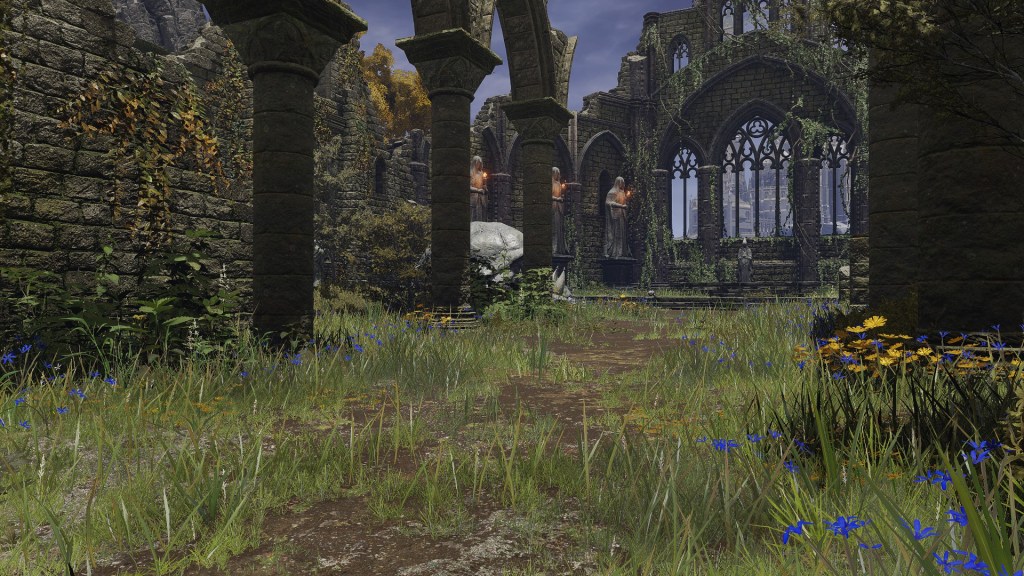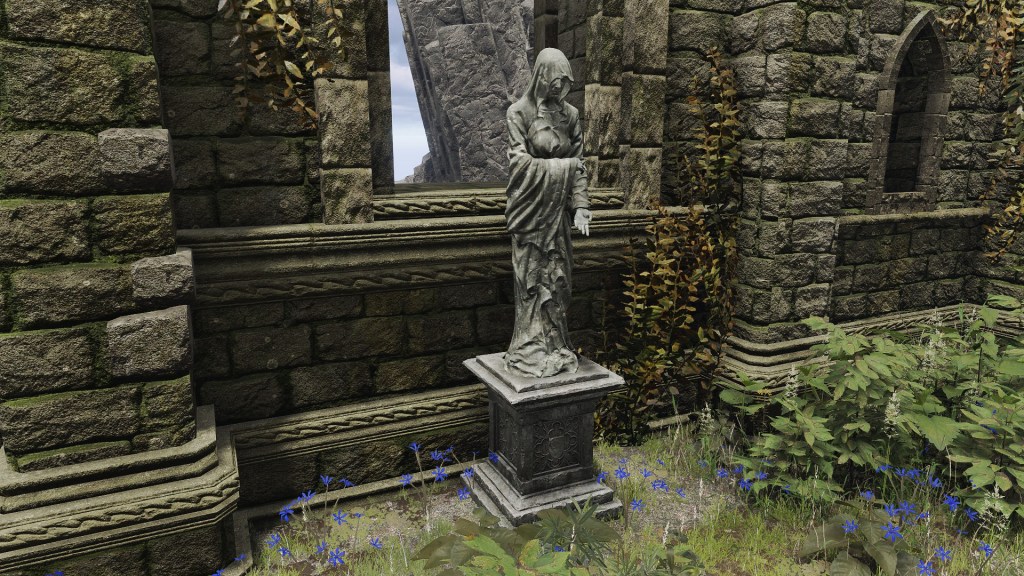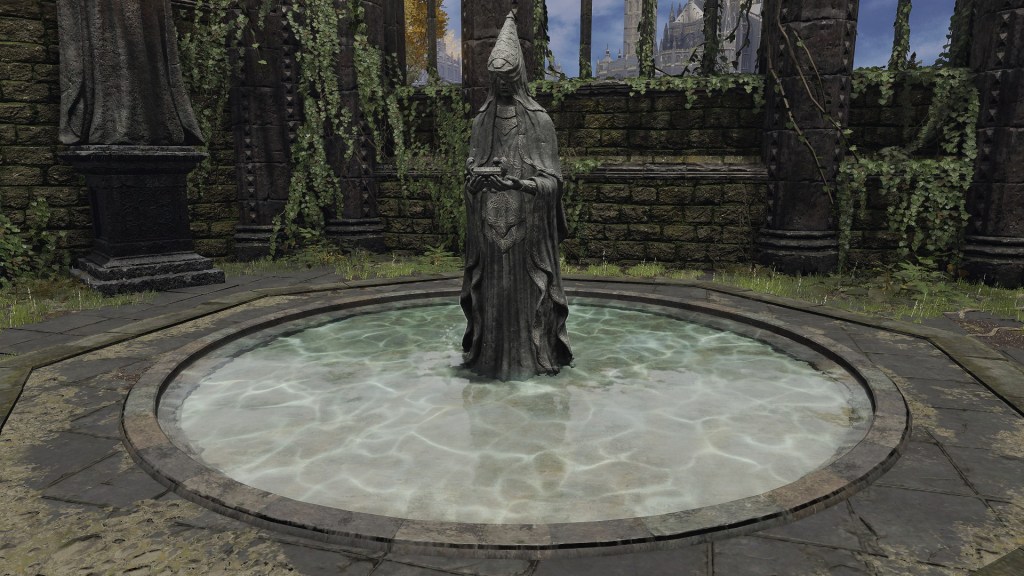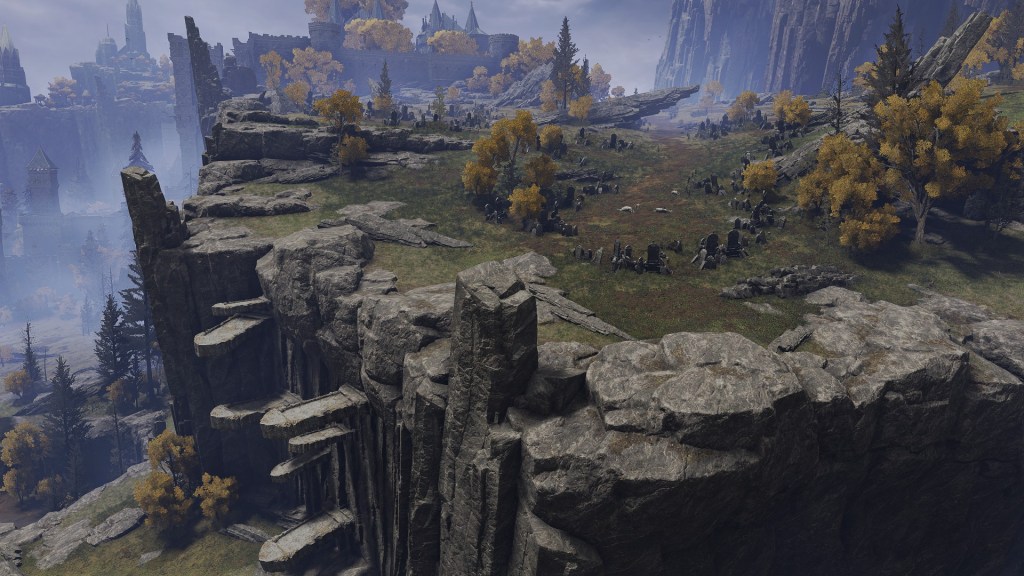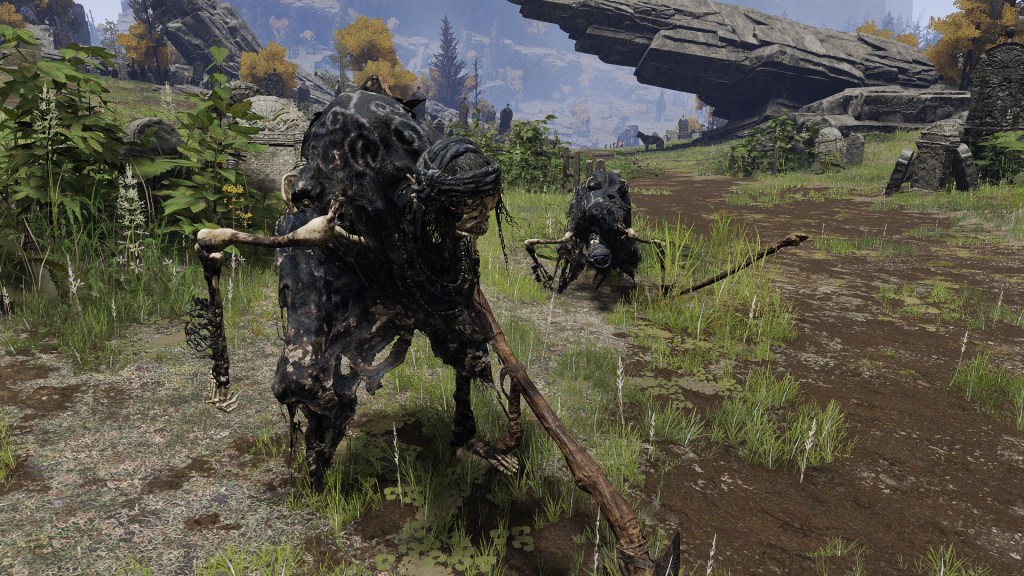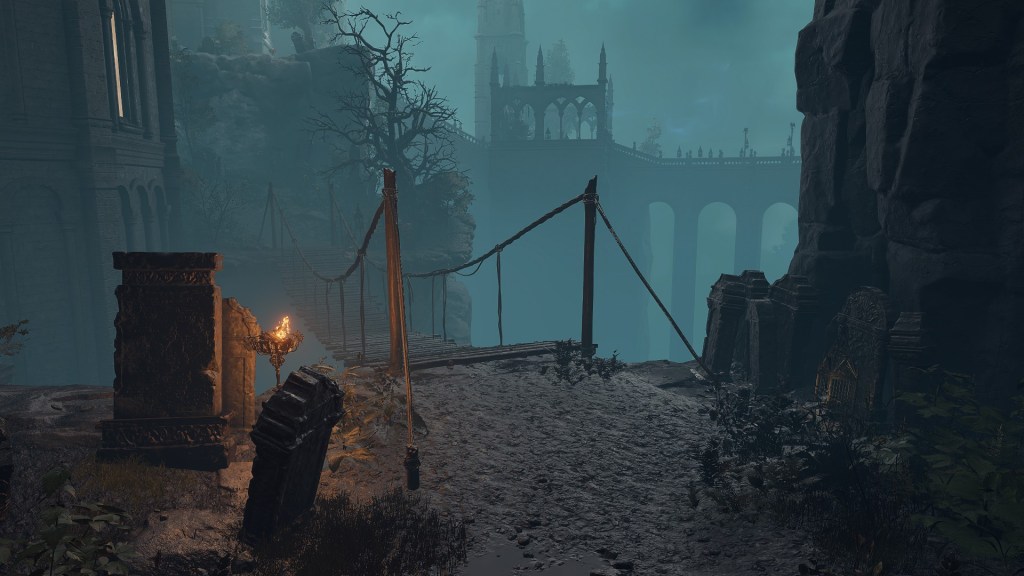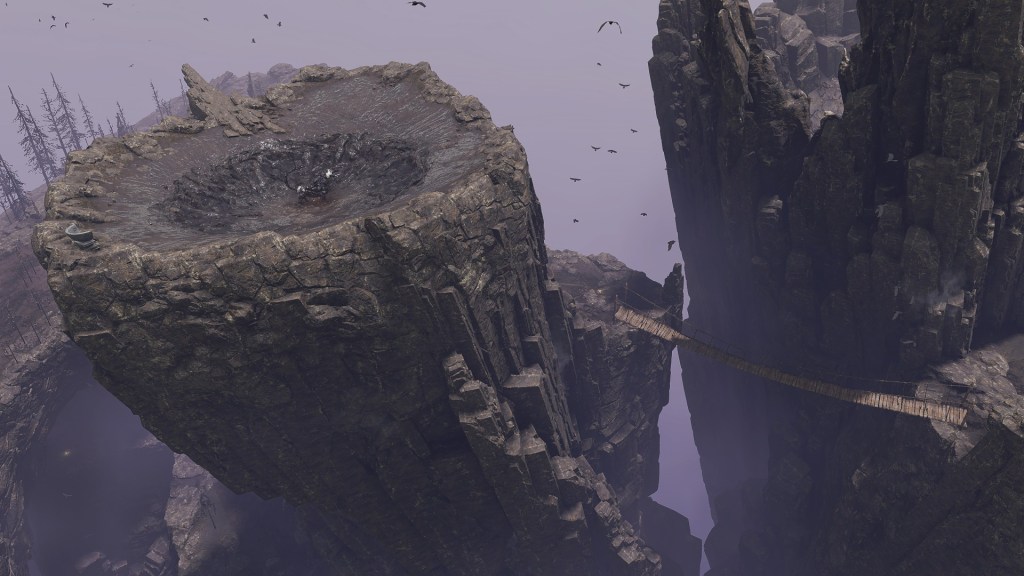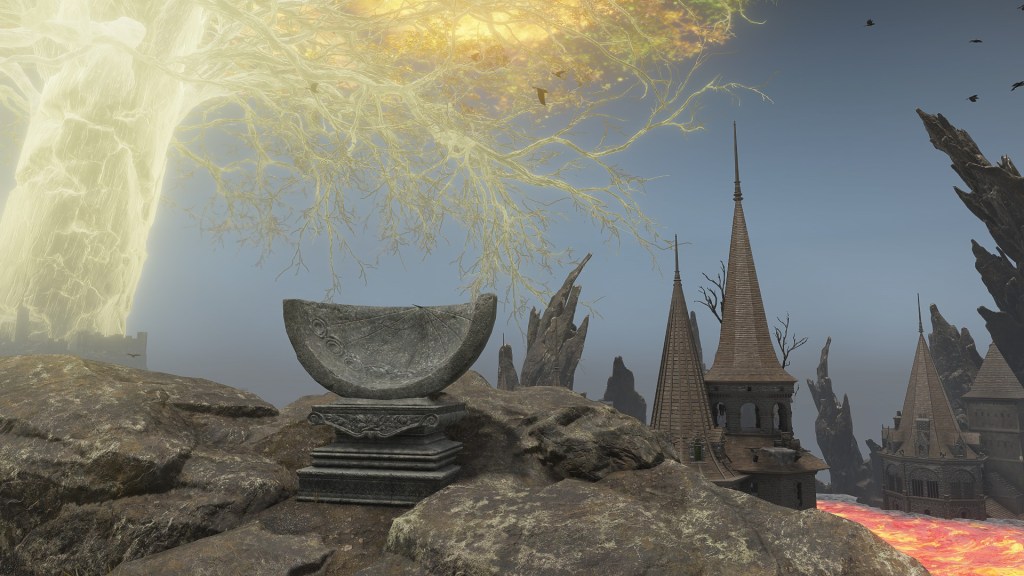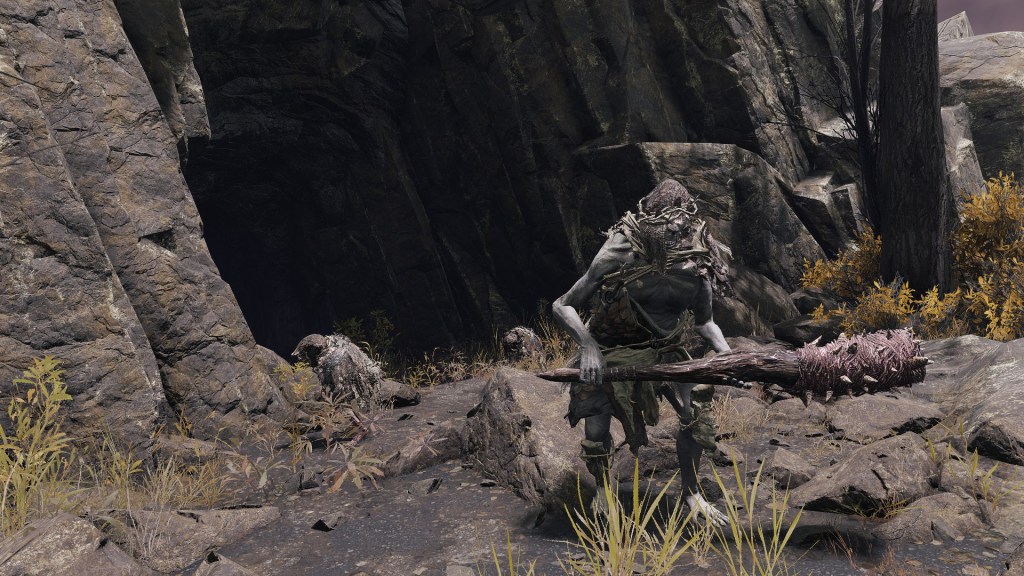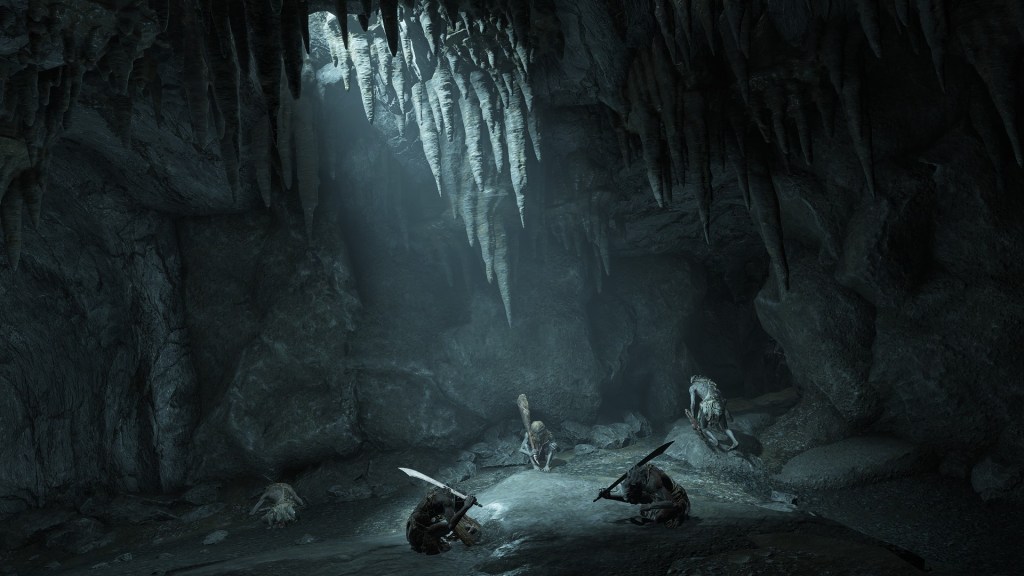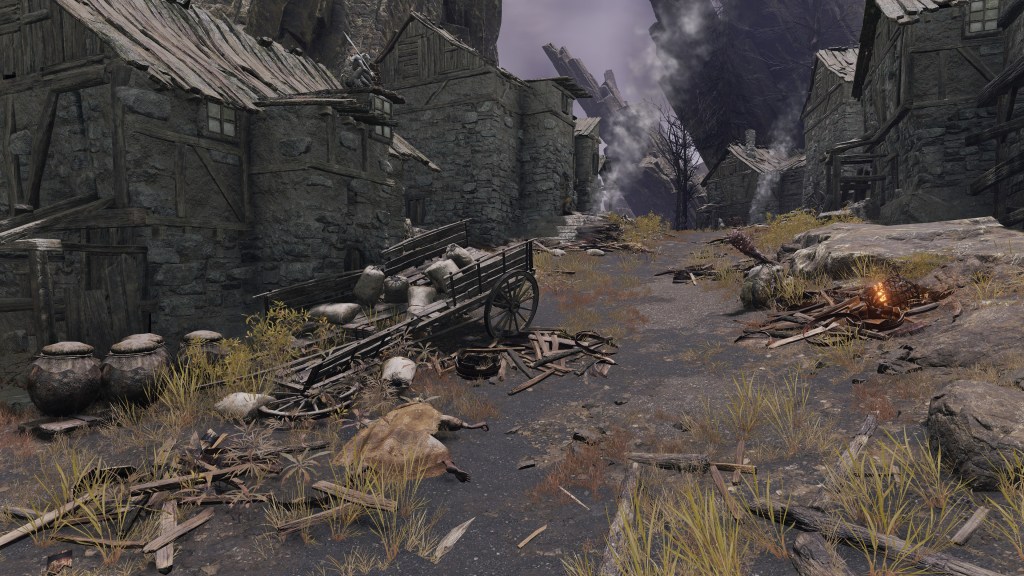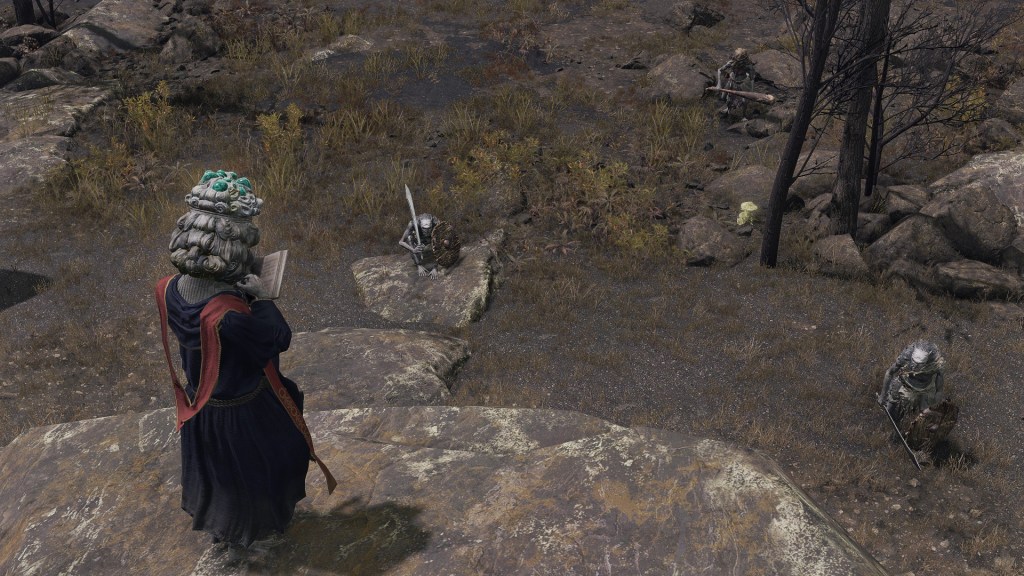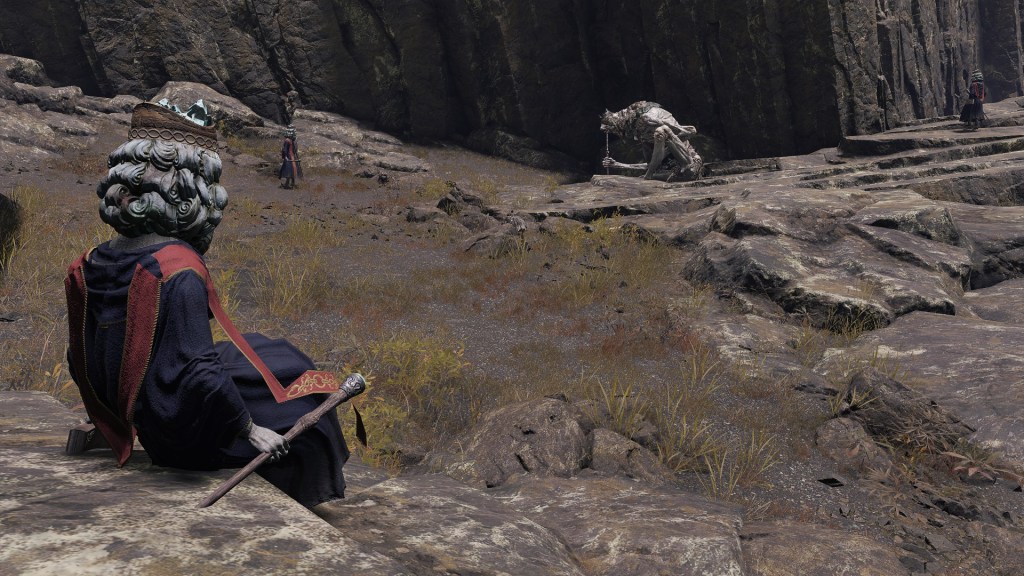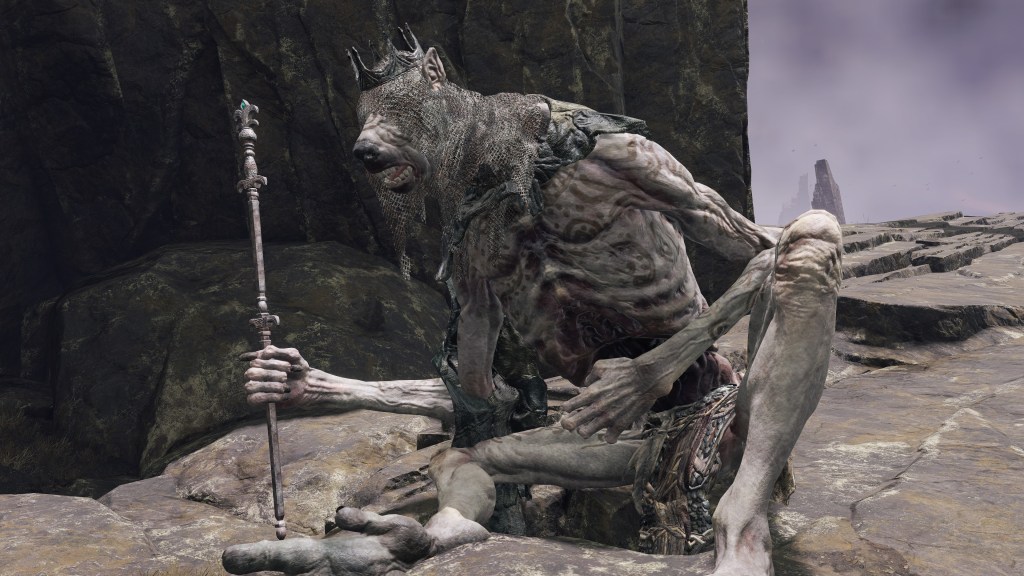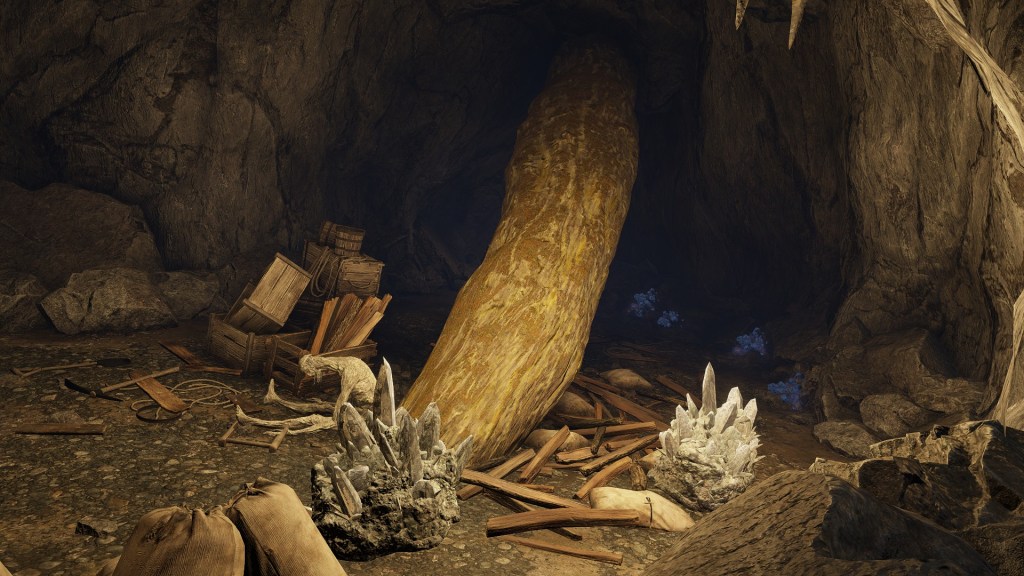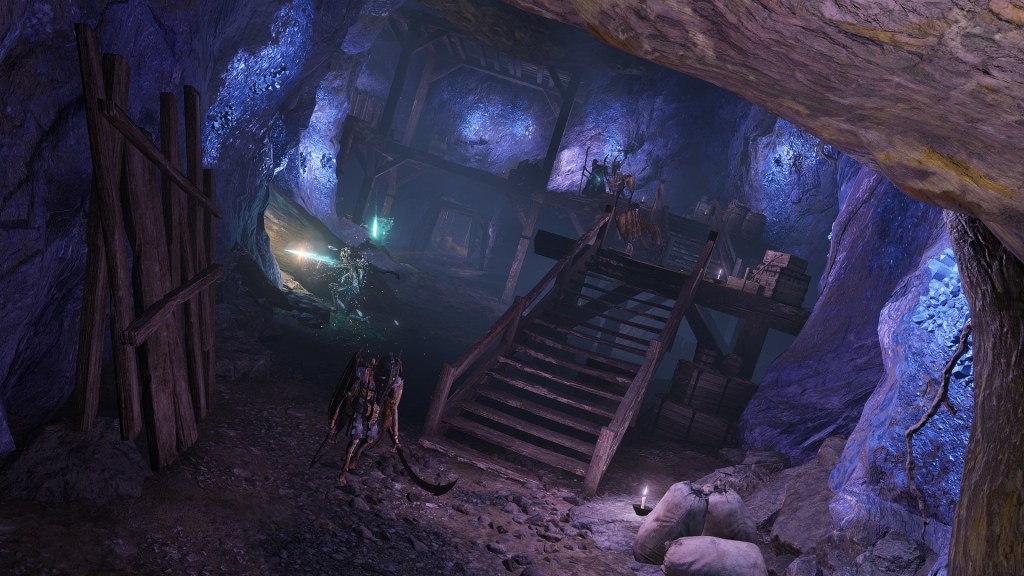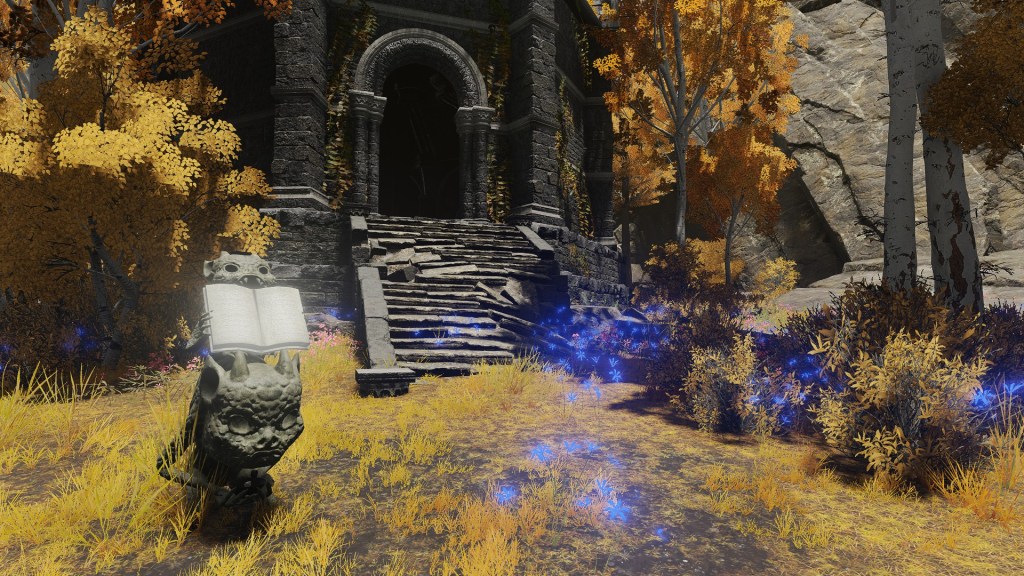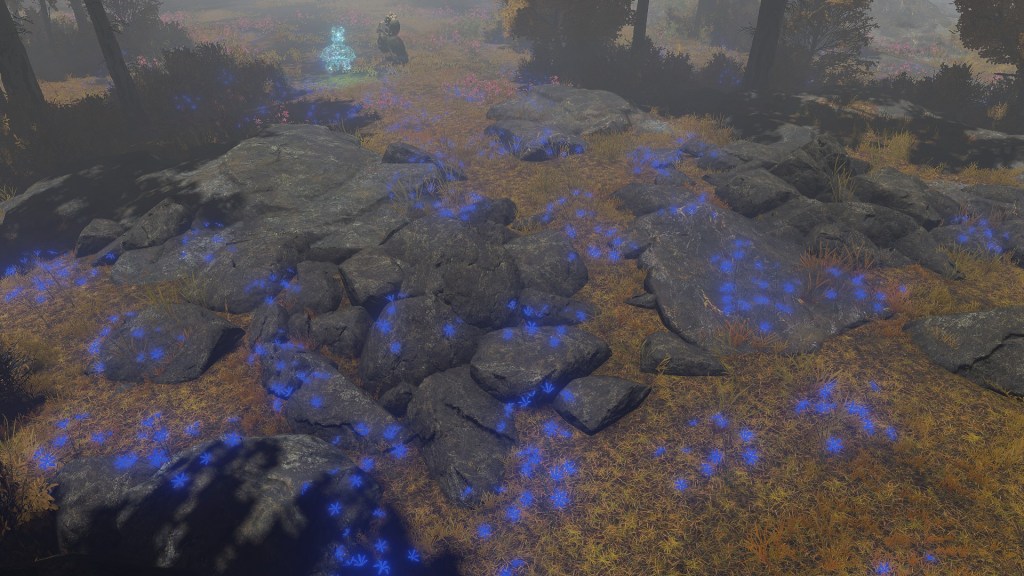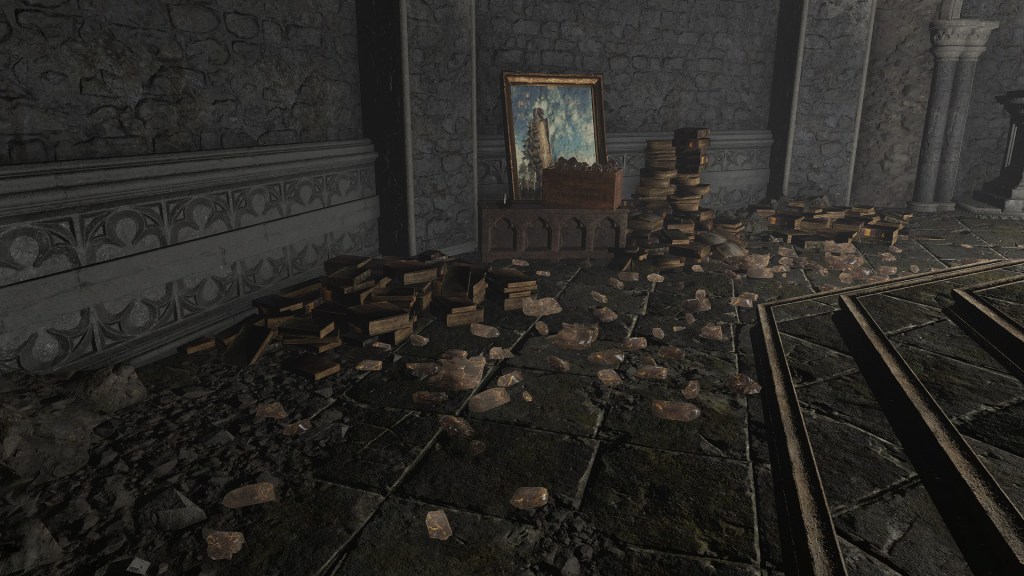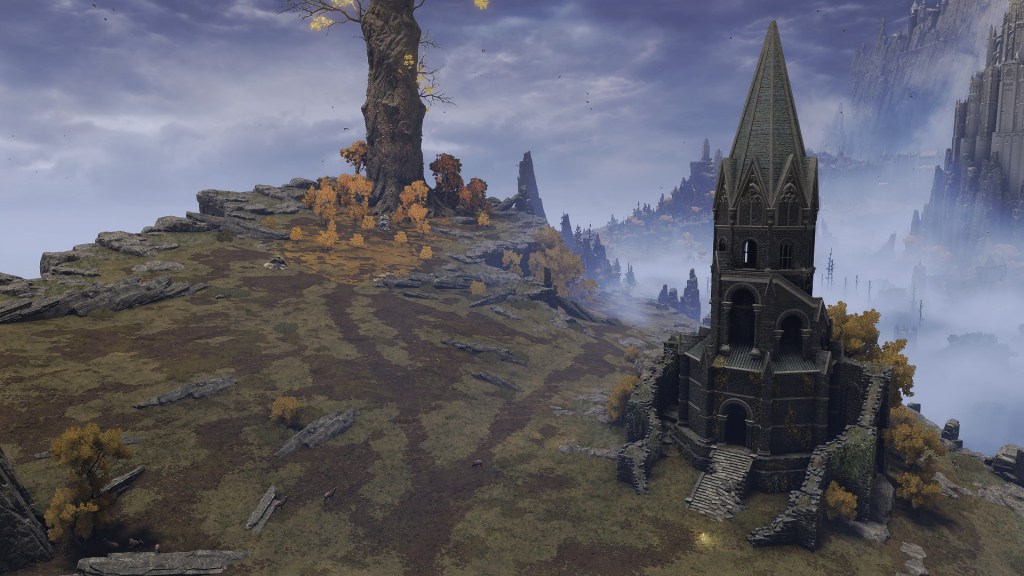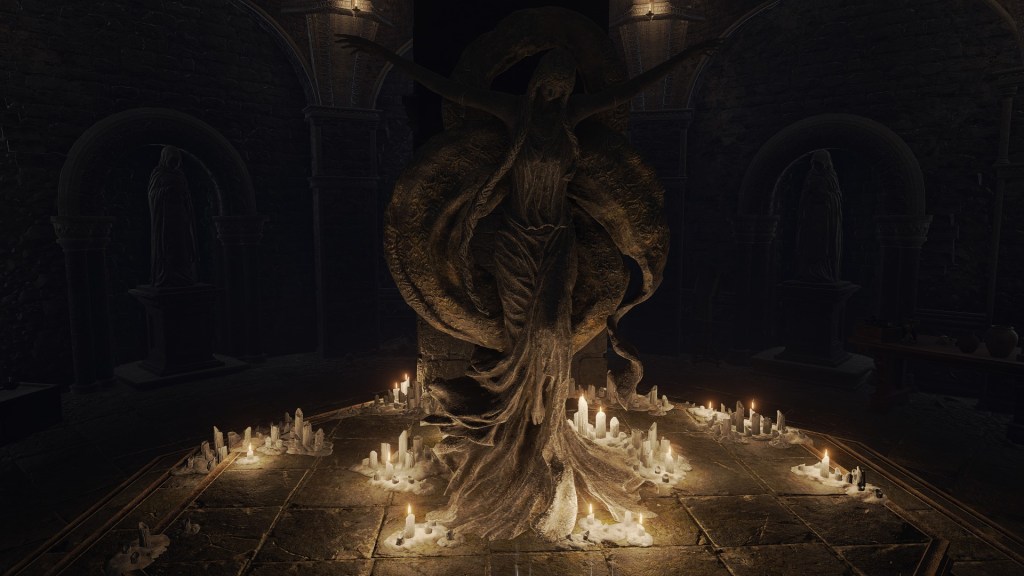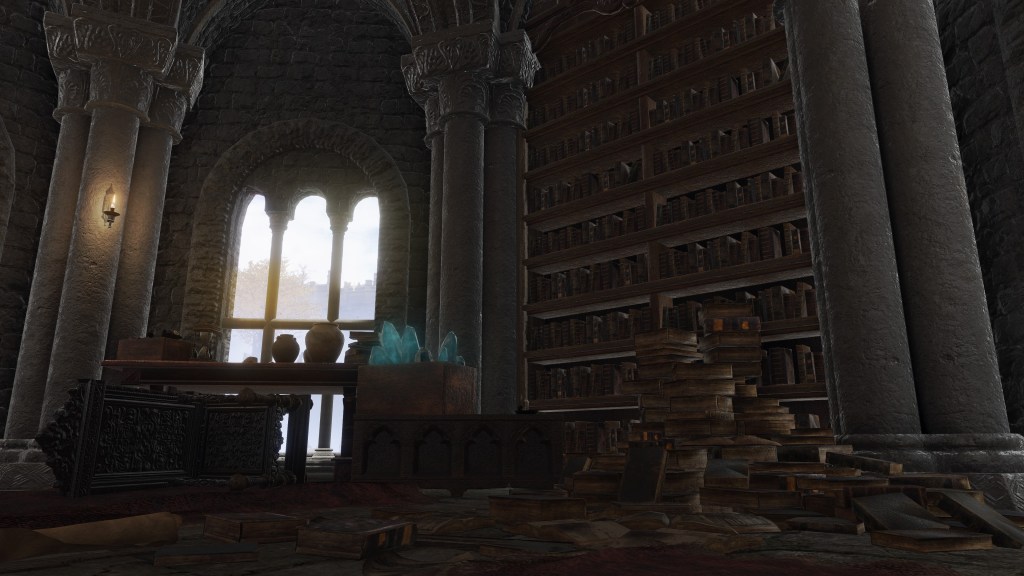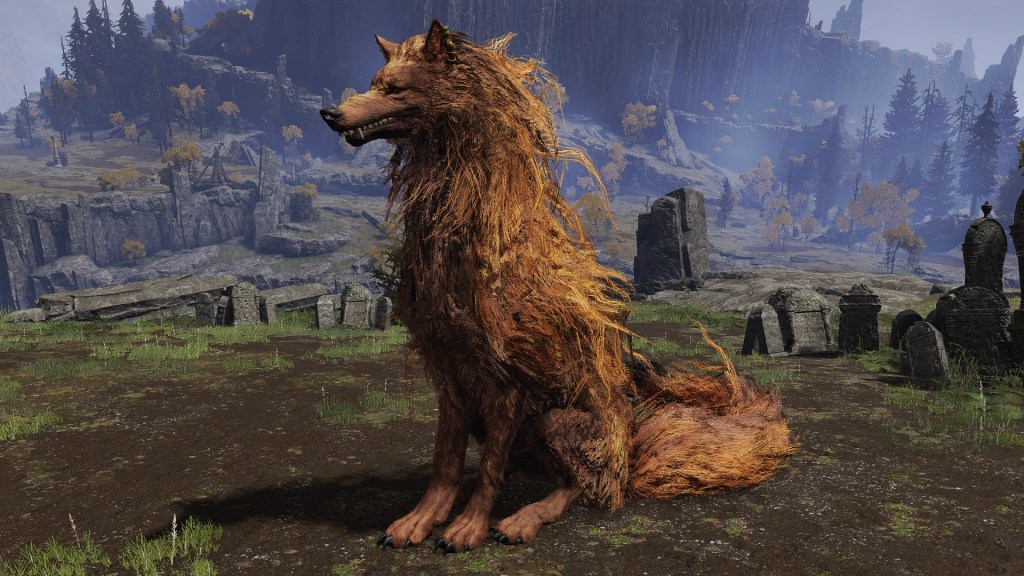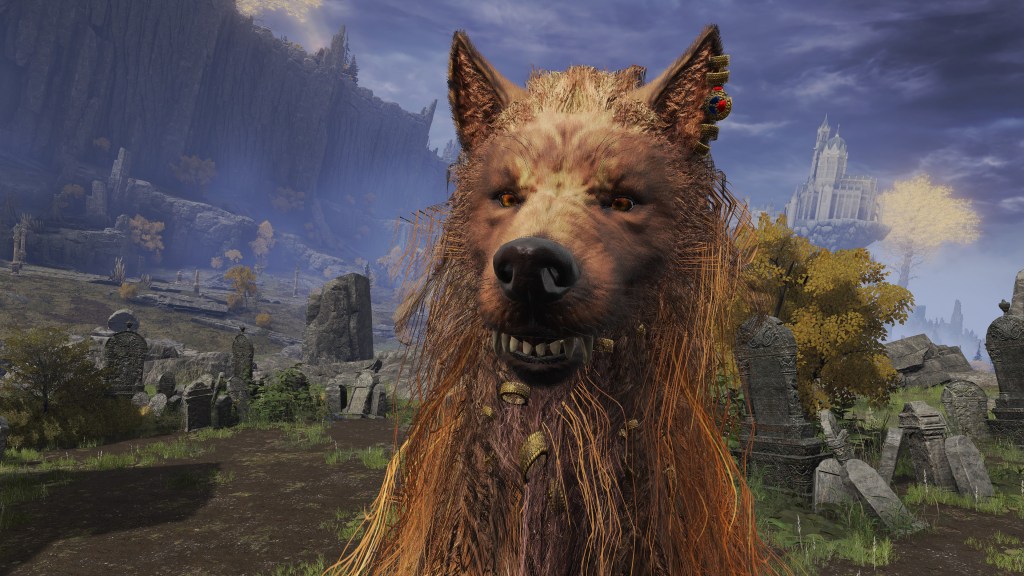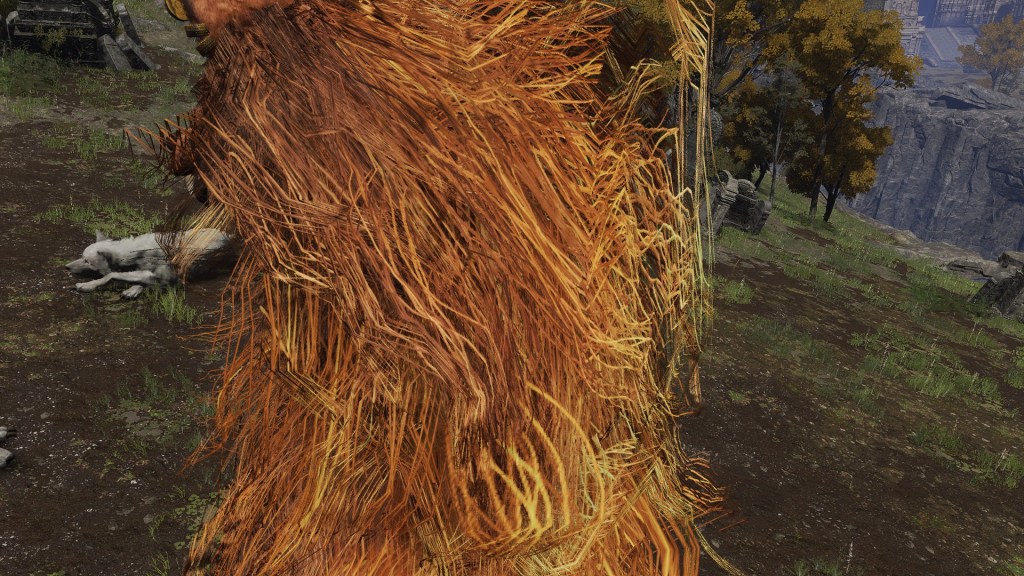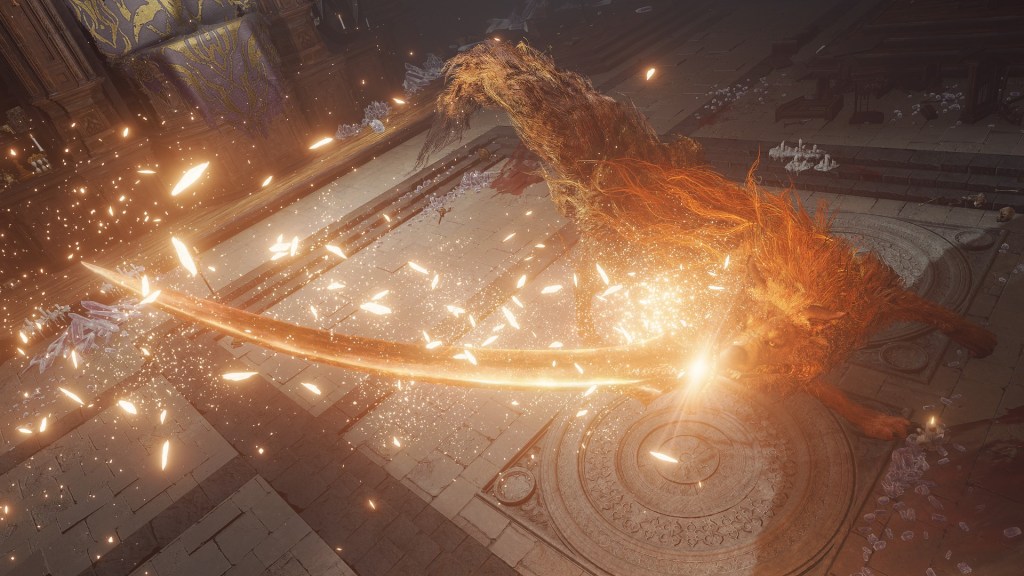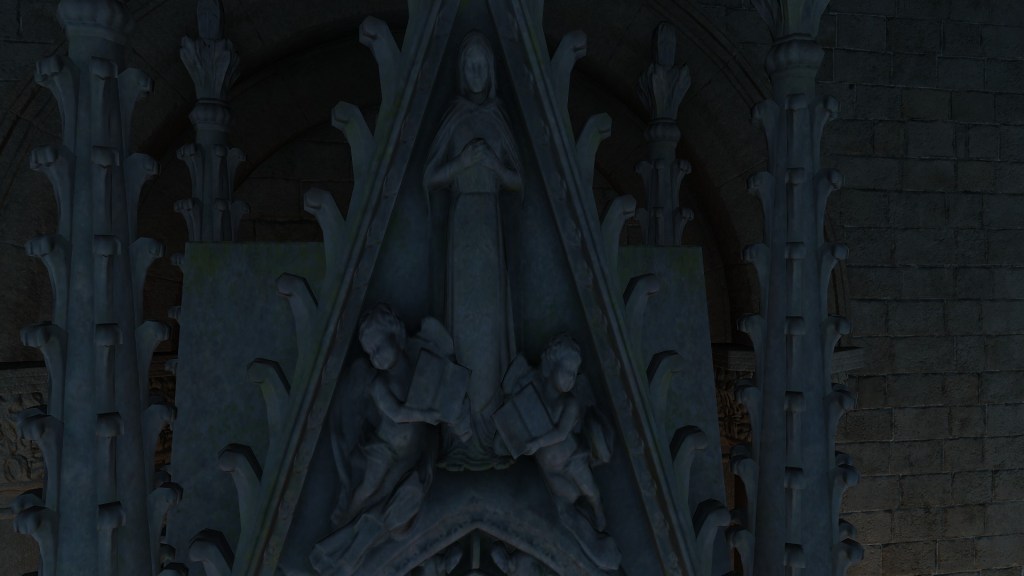Preface
One of the benefits to Director Hidetaka Miyazaki expanding his formula for Demon’s and Dark Souls to an open world is the exponential potential for environmental storytelling. While many of the new details offer only vague insights into the general area, the wars impressed me with just how much we can pinpoint over a broad landscape, especially with many other stories interspersed across it. The legacy is there, set in the geography, and it is very telling. Being one of the smaller conflicts, the Liurnian Wars is all the richer despite what little is actually said. Funny how the wars themselves are, in many ways, incidental to the larger events at play. But that is what also gives them such outsized importance.
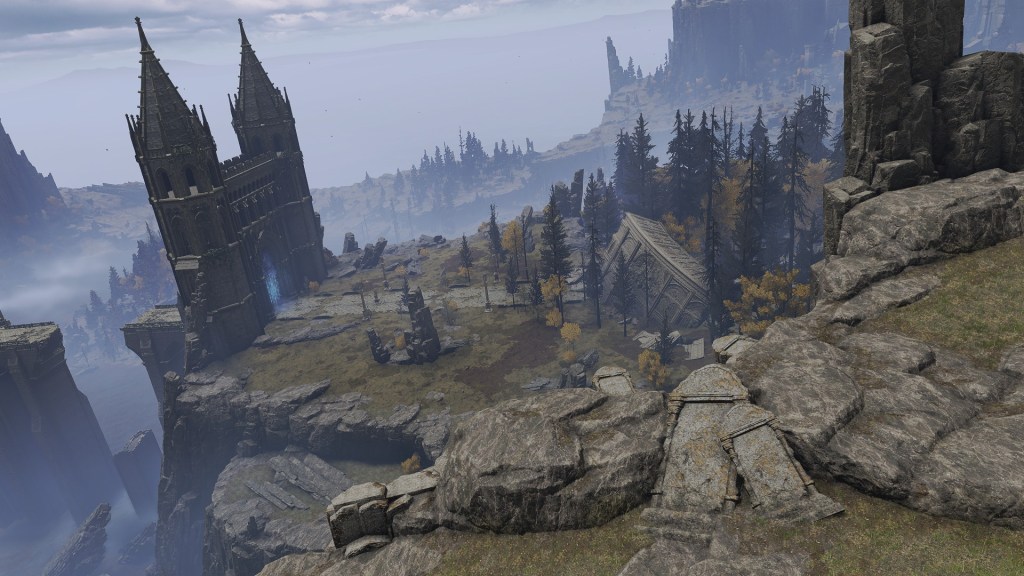
A Goal in Gaze
Marika’s research was an incredibly profound topic cutting to the heart of her world. Understanding the nature of Order wasn’t going to come easy to a queen who had, up until then, relied solely on faith. She was also far behind many of her contemporaries in the Lands Between. Her Numen brethren underground had long been entrenched in night sorcery, and Liurnians were students of the cosmos as a whole. Between the two, the latter was more likely to have information pertinent to her inquiries. After all, their study of the stars included the sun, as illustrated on the hats worn by the academy’s professors. The secrets behind the golden power of day may just be hiding in the sorcerers’ vast libraries. If not, the work of Raya Lucaria and the Carians might still hold clues to accelerate Marika’s own studies; the fact that the Erdtree regulated the stars alone warranted investigation. And sure enough, we do see signs of collaboration for the god’s early research.
Far and away from their manor, the Carian Study Hall sits snuggly amidst the southeastern cliffs, gatekeeping access to the bridge for Liurnia’s Divine Tower. Based on the building’s design, the Carians might have renovated an existing tower transporting visitors up to the bridge; it is similar enough to the tower linking the bridges and the Forbidden Lands. Either way, the royals added their own gothic touch to the architecture, among other things. The path leading into the edifice, for example, is laid with blue flowers possessing a magical glow. The royalty’s banner likewise hangs all around the interior. Then there is the new yet familiar figure decorating the walls inside and out. Rather than just the typical saint statue, there is also a depiction holding open a book — a wiseman more so than a holy man. This “sage” statue betrays the Carians’ interest in knowledge from this place, hence why it is a study with shelves upon shelves of books. The only question is why own a separate facility from both their castle and the academy?
One obvious answer is that the Carians were intrigued by something which could only be studied there and nowhere else, namely the Divine Tower. Certainly, the mystery surrounding such ancient monuments would be an enticing topic for sorcerers. It also only takes a glance at the meteors embedded in the stone to realize the tower’s astrological significance. For the Carians, having a place where they could advance their astrological studies while investigating the Divine Tower as needed sounds logical. The tower’s original function remained integral even after renovations. Upon entry to the building is a chapel with an altar. By placing the statuette of a scholar — inverted so that the moon is under head instead of foot —on the altar, the celestial globe behind it will activate, flipping the entire interior space beyond this chamber along with its gravity. While surreal to navigate, it is the only way for us to access the lift to the top of the tower and the bridge by extension. This system emphasizes the importance placed on entry to the Divine Tower. The royal family wanted a monopoly.
Despite this, the study wasn’t exclusive to Carian blood. Carved onto the wall behind the altar is an Erdtree relief. Bookshelves similarly display familiar golden lion ornaments. Both decorations imply the influence of highland culture on construction. Indeed, among the corpses in the Study Hall, one possesses two holyproof dried livers, which require golden rowas and sunflowers exclusive to Altus to craft; it is presumably why these kinds of livers are otherwise only found there on the plateau. Another possesses the Cerulean Seed Talisman, combining the image of the Erdtree’s seed with the power of focus utilized for sorcery. Together, they indicate the presence of the Erdtree faithful from the plateau jointly studying with the Carian sorcerers, specifically in relation to the Minor Erdtree seeds. In short, this was a collaborative project to add to Marika’s prior research.
This examination was kept especially under wraps. Another of the study hall’s corpses carries the Mask of Confidence, which was forced upon the preceptors after Radagon married Rennala. The mask’s design demonstrates the man’s intentions: a star on the forehead but his golden rune over the mouth, “stitching” it shut. Whatever glorious discoveries their minds accumulated, they were never to speak of them. To be precise, the god’s other half wanted his martial affairs kept secret — humorously, it boosts the arcane stat; in other words, god’s secrets. Evidently, the couple’s work in that study was among the things this “Mask of Secrecy” (秘匿の仮面) reminded their aides to protect from outsiders, which the surviving preceptor Miriam continues to do to this day. But this reveals a problem: that collaborative project only began after Radagon’s marriage. Considering that their union concludes the Liurnian Wars, this begs the motive for the conflicts. For that, we need look at Barrier of Gold.
Mask with its mouth sewn shut with golden thread. Boosts arcane.
Thing that Radagon, who became Rennala’s husband, forced on the sorcery professors of Caria. Our affairs are all to be kept secret.
Aside from a reference to Magic Barrier from Dark Souls, this “gold” magic barrier (黄金の魔力防護) is a prayer invoked against sorcerers during the Liurnian Wars. Therefore, the Erdtree cross sigil the incantation generates dates both its creation and the wars to after the Crucible era. Put another way, whenever conflict did occur, Marika was already in the midst of her research. Up until that point, relations between the two parties had always been tense, treating each other with caution and suspicion. Would Raya Lucaria be willing to open its doors to the Erdtree kingdom, share its secrets with Marika and her ilk? Unlikely. Conversely, Liurnia’s glintstone sorcery was logic opposed to Altus’ Golden Order. That leaves the queen of Leyndell with force as her only option. If she had ever planned to one day conquer the lowlands separating the kingdom’s heartland from its penal colony, now was the time to put those plans into action. And so, the Liurnian Wars fell into motion.
Trial Run
In the First Liurnian War, Radagon distinguished himself as a hero leading the Erdtree’s army. This is odd given that the role has traditionally been left to Godfrey. It was he who Marika had always relied upon when she needed her enemies destroyed. And yet, he has no obvious involvement in either Liurnian War. Why was the king of the battlefield not present for a battle his queen was so invested in? One possibility is that he was occupied with another conflict. But if so, why would Marika direct her other half to lead troops against Liurnia? Surely that could wait until after the ongoing matter was settled. There was no need to start a war on two fronts. The more likely possibility then is that the Elden Lord was simply in no condition to fight. But with such a large gap since Godfrey’s last conflict, this couldn’t have been a debilitating injury Marika’s incantations wouldn’t solve. That leaves his emotional and mental state, which may well have still been recovering.
In the First Liennie War, the red-haired Radagon became a hero.
Recall that the Elden Lord had recently abandoned two of his own children for politics. The man was a warrior at heart, used to solving problems in straightforward and honest manner: conquering the enemy in front of him. There was no sleight of hand or misdirection — only a battle, simple and clean. But politics was a different beast, dirtier than the bloodiest of battlefields. The enemy was always at his back, never granting the opportunity to settle matters with their fists. Circumstances asked him to “betray” the innocent twins he had raised, to sacrifice their well-being for the position of power he craved. That decision would weigh heavily on any loving father, but it must have been devastating to an honorable strongman like Godfrey. In that case, it wouldn’t be surprising if he remained inconsolable after the incident. And if so, then he simply didn’t have the will to lead troops into battle, least of all for Marika’s personal pet project — if anything, her behavior might have worsened his depression. How could she just carry on after doing something so cold and calculating? She too broke his heart.
Suffice to say, the Eternal Queen needed someone else to fight her battles for her. And who could she trust more with this task than herself? Radagon had the strength to inspire the soldiers, and his royal status meant that no one would question the queen making him a general. All in all, it was the ideal solution so long as her husband was unavailable. The strategy also wasn’t complicated. The Bellum Church enshrining Radagon’s icon lies slightly east of the sword monument dedicated to the First Liurnian War. Together they imply that the future hero marched his army down the Bellum Highway when the conflict took place. In other words, the invasion couldn’t be more straightforward. Radagon would seize the school and stage subsequent territorial annexations from the safety atop the mountain. If only Bellum wouldn’t live up to its Latin name meaning “war”.
An incredibly large collection of graves stands along the cliffs next to the eastern academy gate. Because it would ruin the Erdtree army’s element of surprise, Marika was unlikely to have made a formal declaration, so Raya Lucaria probably found itself hurriedly mobilizing to halt Radagon’s advance at the gates. The resulting fighting was heavy, but the invasion ended in failure. It wasn’t as if Leyndell hadn’t properly prepared for the opponent they were up against. Barrier of Gold is only known to have been used in both Liurnian conflicts, presumably invented specifically for them given its niche use reducing magic damage in particular. A Night’s Cavalry along the highway has likewise collected Giant Hunt, suggesting that Leyndell’s veterans were ready to employ their skills honed combating the Fire Giants against the trolls among Caria’s enchanted knights. Marika certainly didn’t expect to simply waltz into the sorcerers’ prized libraries unobstructed.
One of the Golden Tree faith prayers.
Greatly boosts magic cut rate, including surrounding allies. Continue to pray while holding down so effect won’t activate.
Heroes of the Golden Tree in the two Liennie Wars, where the red-haired Radagon became a hero, are considered to have used it.
However, she still underestimated the strength of Caria’s knights. Despite numbering fewer than 20, they were all on par with the best of Leyndell’s heroes, Radagon included. Moreover, they had been preparing, too. The Carian Knight’s Shield was designed to resist holy magic just as much as glintstone sorcery, showcasing their full expectation of Leyndell’s betrayal somewhere down the line. Neither party had the severe advantage in this clash, leaving the battle at a stalemate. It didn’t remain so for long, however. Beneath the adjoining bridge is a scarab possessing Shield Bash. Like Shield Crash, this ash of war invokes the idea of attacking whilst defending, in this case against an enemy already upon you. Taking that into account, the sorcerers defending the gates must have launched a counterattack to push the golden army back. The academy’s wisemen understood the proverb that offense was the best defense. And as we can see from the collection of graves only a little further east of the war’s sword monument, there was another major skirmish halfway up the Bellum Highway.
In all likelihood, the unexpected resistance at the gate prompted Radagon to pull back his troops so they could reformulate their strategy. Remaining there was only going to cost the commander more soldiers while they continued to make no progress. They needed to consider a new mode of attack. But simply retreating proved to be a grave strategic blunder, as the academy army soon jumped on this opportunity to pursue. This dragged the reeling Erdtree forces into another battle, which could have ended disastrously. It was there that Radagon had likely exhibited his heroism, fighting valiantly even while on the back foot. Thanks to his efforts, Marika’s kingdom was saved from a total rout and could sue for peace. With the enemy backing off the hostilities, the Carian forces evidently agreed to an armistice. The dead were given their proper burial, and Radagon’s army returned home in embarrassing defeat. For the first time in Leyndell’s history, it had lost a battle. Marika was no doubt furious.
Two-Faced
Despite this humiliation, Radagon’s total withdrawal was exactly what the royal capital needed to come up with that new battle strategy. Give Raya Lucaria time to lull back into a false sense of security, then strike from an unexpected angle. The sword monument for the Second Liurnian War was erected on the Eastern Tableland, with plentiful graves to showcase the aftermath of the battle — skeletons of both the spellcaster and mundane warrior variety betraying the losses by both sides. From this, we can infer that Radagon’s army planned to discreetly march through the rocky cliffs and attack from the Academy Gate Town; by the time the Raya Lucarians scrambled over to retaliate, the Erdtree kingdom would be at their southern gate. This would be a more thoughtful mode of attack compared to the last war. To this end, we see preparations made for just such an operation.
The Frenzied Flame Village (Site F) stands out as the only extant township enclosed by large walls. Overseeing the slopes leading to the hilltop hamlet likewise looms a lookout tower, the remaining walls hinting to a larger fortification once upon a time. The entire setups suggests that this village, reached after a short climb immediately south of Dectus, was prepared for an assault coming up the Bellum Highway. In short, it was probably established in the initial stages of the Second Liurnian War. For sure, the Church of Inhibition overlooking the place implies Marika’s presence at the village, enshrining her statue as it does. What would bring the queen to a walled encampment off the plateau except the war she had a personal stake in, like several before? This was to be the staging ground for Radagon’s new invasion, their base of operations commanded by the kingdom’s god and sovereign. Perhaps that is why Site F was built upon those specific cliffs, next to a Minor Erdtree. If nothing else, the invading tree served as an excellent flag marking her kingdom’s first claim over the foreign land.
Marika’s stay might also explain the unique defenses. Rather than commit to a proper fort, the Erdtree forces settled for a simple walled enclosure and smaller lookout post. Protecting the queen was obviously paramount. However, there were other complicating factors. For one, building any permanent defenses takes precious time away from the actual invasion. Moreover, it makes them conspicuous. One doesn’t need to attend a mountaintop academy to see the walls and towers rising from the opposite clifftops — the sorcerers would be aware of Leyndell’s infringement almost instantly, and no doubt mobilize just as fast. The god’s army simply couldn’t afford to build anything too complicated before the Carians came marching. But in that case, why build such defenses at all? If the plan was to surprise the enemy from an unexpected angle, revealing any signs would be detrimental. And yet, signaling their exact location was probably the intention from the start.
Put simply, Marika wanted the Carians’ main force to come up Bellum Highway. Recall that the plan was a blitzkrieg against an unexpectant foe. But the Erdtree kingdom has already lost the element of surprise; the first war gave away the game. If the Liurnians weren’t fully prepared for a war with Altus before, they would be now. Foregoing a direct assault only gave the lowlanders more time as well. The rocky terrain made it impossible to pave a highway through the east, slowing down Radagon’s advance compared to the last war. Therefore, any attempt to quickly capture Raya Lucaria via ambush needed to get extra creative. Thankfully, the Erdtree forces were only shown to be entrenching themselves by Dectus. To the average observer, this looked like they were settling in for a long war, aiming to slowly sweep over the region from behind the safety of their walls — not unlike the Farum colonists who built Caria Manor. This was a direct provocation to Rennala, bait to prove the hero’s legend was no mere fluke. And if it lured her out, then Marika’s gambit worked.
Walled fortifications are notorious for requiring far less manpower to uphold than to assault. While the Eternal Queen held down the proverbial fort with a skeleton crew, Radagon could sneak the whole of the army around and take the academy unawares. The Carian army would then be forced to either retreat or be caught in a pincer at Bellum. Either way, it was checkmate. And so, the highlanders built their hasty stone defenses in the hopes of drawing out the Carians’ main force. If all went according to plan, the lowlanders would be distracted by the obvious threat, not realizing the true danger creeping up to their rear. Marika need not waste her soldiers’ time and energy building an entire castle. By the time the Liurnians rained sorcery upon their walls, their precious academy would have fallen. They constructed the bare minimum for this strategy to work, then set off before the enemy arrived. So long as the base camp held out, Radagon’s slow-moving march wouldn’t cost them anything.
But then something unexpected happened: Rennala intercepted Radagon at the Eastern Tableland. Perhaps she had already seen through Marika’s stratagem, or perhaps she simply conceived the same idea to attack where the enemy least expected. Whatever the specifics, the Full Moon Queen ended up crossing paths with Marika’s other half in the middle of his hike. Naturally, they came to blows. Once again, the gold and moon armies were caught in a dead heat, with no foreseeable victor. If they hadn’t met when Radagon first showcased his heroic bonafides, Rennala certainly had the chance to test his mettle this war, and the man proved a worthy match. Although he hadn’t planned to get bogged down in this countryside, defeating the Full Moon Queen there would deal a decisive blow to Liurnia’s military capacity and morale. This was an opportunity that Leyndell’s forces couldn’t pass up, despite holding no clear advantage. The only way through was forward.
But while the red-head hero was engaged with the startling enemy, another army was still maneuvering up Bellum. Site F’s lookout tower lies in ruins, and past it hides a horde of headstones leading into the Black Knife Catacombs. Inside, we can loot a Spellproof Dried Liver normally located in areas frequented by sorcerers, including Raya Lucaria and Caria Manor. Defeating the local boss similarly rewards us with a twinsage sorcerer’s ashes. Statues of Burial Watchdogs wielding the sorcery staff likewise decorate the chambers. Altogether, these details suggest that the otherwise unassuming tomb was built for sorcerers, at least in part. There is also a smaller coffin cemetery on the opposite outskirts of the village, but that one may be for the villagers and postdate the war. Regardless, the implication is that Site F was still being assaulted by Liurnian forces from the northern angle.
Marika and Radagon found themselves caught in a pincer; from the destroyed eastern wall to the enclosure, it was successful. Losses notwithstanding, the north Liurnian army hammered the enemy queen’s position, ultimately breaking through her defenses. This was obviously terrible for Leyndell’s prospects. The enemy would now be pouring in, mowing down the exposed garrison as they made their way to the real prize: the Eternal Queen. No matter her troops’ valiant efforts, if Liurnia captured their god, the war was over. But looking at the circumstance, the Erdtree forces could, at best, slow the enemy advance. Perhaps the Church of Inhibition’s exact location serves to indicate how Marika was forced to higher ground, left to make a last stand cornered on the clifftops. If so, then she was all the more fortunate that word of ceasefire came before the enemy had her at their mercy.
During all this, Radagon made the most surprising move: express desire to wed Rennala. The Liurnians must have been taken aback by the hero’s sudden proposal. To anyone, it would seem completely random. Mayhaps it crossed their mind that this was a distraction, some ploy to get them to lower their guard. But Radagon was sincere. According to Miriel, meeting beautiful Rennala in battle caused the Erdtree’s hero to regret the incursion and choose to be her spouse instead. He was willing to atone for leading armies against them if the Full Moon Queen was willing to accept his love. As a supposed member of Erdtree royalty, Radagon did have the status to marry a Carian, and their union would be an appropriate political solution to the frayed relations. The idea wasn’t unreasonable on its face. And in the end, Rennala accepted the arrangement, bringing the Second Liurnian War to a close with no victor on either side. Love conquers all; it is a beautiful story — and likely a fiction. Indeed, mischievous Marika had probably devised her most devious prank yet.
Lord Radagon was a hero fluttering red hair. He visited this land leading the Golden Tree’s army, but met Lady Rennala in the midst of battle. He regretted his battles of aggression and became spouse of her, who is Queen of Caria.
In the Second Liennie War, there was no winner for the gold and moon, but a union was born to atone for it.
Consider the circumstances. Thanks to their connection, Radagon was undoubtedly made aware of Marika’s deteriorating situation and vice versa. And seeing himself hopelessly bogged down with no clear end in sight, he suddenly sues for peace, the other army receiving word to halt their advance just in time. That isn’t love at first sight; it is opportunism. There was no way for the red-haired hero to turn back and save his golden-haired queen, at least not without revealing their true nature. For the second time now, their campaign had been disastrous, possibly unsalvageable in this case. If they had any hope of climbing out of the hole they dug themselves, it needed to come from the enemy. Of course, escaping this quagmire was easier said than done when Rennala held all the cards.

What incentive was there for peace, much less diplomacy? The only gains for Liurnia was to prevent the further sacrifice of soldiers, but their lives were hardly being lost in pointless fighting. The Erdtree kingdom showed their hand in betraying Caria’s trust twice now. Why back off as they were about to cripple an enemy who, history dictates, would simply return to try again? This was their chance to end things decisively, thereby saving far more lives in the long term. Granted, what Radagon ended up proposing was a far stronger deterrent than two parties simply giving their word. Marika and Radagon must have understood by now that war without Godfrey wasn’t going to cut it. To acquire the enemy’s knowledge and achieve their ambitions, the two halves needed to pursue alternative options. Still, it would be foolish to welcome a fox into the henhouse after it had tried breaking in, especially twice now. The Eternal Queen had to somehow appeal to these sorcerers with emotion rather than logic.
Luckily for them, there was an opening to exploit with Rennala. Just look at the Full Moon Queen’s behavior after accepting Radagon as her husband. More than an alliance, their union gave way to a slew of princes and princesses. And when he later abandoned the witch to marry his other half, she is left inconsolably heartbroken. Whatever Radagon’s feelings for his first wife by that point, she was obviously far more emotionally invested in the relationship. Where was the man who forewent conquest and glory for his kingdom to marry the enemy? Did he even exist? Perhaps not. Recall that she had become a queen very young, spending most of her life immersed in books and stargazing when not managing the realm. Is it any wonder if she became enchanted with a charming foreigner as they clashed on the battlefield — especially when his fiery hair likely brought back fond memories of her childhood home? All it would take is one fluster or similar signal for Radagon, and Marika by extension, to know of the young woman’s crush. And that is all the information her adversaries required.
In other words, Radagon’s confession of love was no more than a tactic to sway the Full Moon Witch into accepting a ceasefire. To save her own skin, crafty Marika had her other half offer a marriage alliance, playing on the wise yet naïve queen of Caria’s affections. Radagon’s feelings were never so deep. His desire for their union was only sincere so far as the gains it would provide. After all, this scheme also advanced he and Marika’s end goal, with Radagon simply standing as her substitute. In accepting the hero into her house, Rennala had unwittingly let in a Trojan Horse. But, blinded by bold declarations of romance, the Full Moon Queen ignored the risks and sacrificed her winning hand. And this bet only succeeded because her opponents were given reason to believe that such a simple ploy would work. In a single stroke, Marika had flipped her personal crisis on its head, getting the wealth of knowledge she wanted in the process. It was truly her greatest bout of mischief.
Wedding Bells Ring
With the marriage decided, the Church of Vows was constructed upon the site of Rennala and Radagon’s fateful battle. Although it can have a meaning of contract, “vows” (結び) more broadly refers to a “union” — joining two things together — with the kanji also used in terms like “marriage” (結婚) or “conclusion” (結末) to convey that ultimate harmony. As Miriel contests, there are no intrinsic heresies. Such definitions are, in his views, just labels retroactively applied to competing sets of laws. If those laws came together to be reconciled, everyone could peacefully coexist. Rennala and Radagon “tying the knot” would thus put a bow on their respective ideologies; removing the strict divisions between their two peoples. Theirs was a union of two royalties, two nations, two orders. That broader significance to this marriage meant that the ceremony needed to carry with it all the symbolism. And fundamental to that, of course, was the location. What place more fitting to formally seal the end of hostilities than where it arguably already happened? Even better, it was under view of the full moon overlapping with the Erdtree in the sky.

There is no intrinsic heresy in this world. All can be united.
This Church of Union is a place where once the Golden Tree and Moon, the two royal families, were joined together in reconciliation, where the red-haired Lord Radagon of the Full Moon’s Lady Rennala confirmed their vows.
The building itself was just as important. Larger than most church ruins we come across, the Church of Vows was worthy of such a grand celebration. Construction was handled chiefly by Liurnia based on choice of iconography. Off to the sides after entering loom statues of a woman wrapped in robes. Although this same asset was first used in Dark Souls III (DS3) to represent the High Priestess of Lothric, the new context equates them with the witch statues so commonly identified with Rennala. The reason for the different model can be derived from the figure extending a welcoming hand to passers-by — any who enter the church are warmly received by the sorcerers. The apsis is likewise decorated with the saint statues used at the Carian’s own cathedral on the Moonlight Altar, only holding up torches to herald the prospective wedding. The floor is similarly covered in a mix of both the gold and blue flowers associated with their respective civilizations to highlight both sides coming together.
Everything was set up so that the residents of Altus Plateau would feel pleasant and safe attending this festivity in, up until recently, enemy territory. This was certain to be a tense engagement just by nature of the situation, with dignitaries of both governments in attendance needing every encouragement to get along and ignore personal losses suffered from each other. One can only imagine the number biting back their truth thoughts as they stood side-by-side with erstwhile foes, glancing around their surroundings constantly reminding them to play nice on such a joyous occasion — and let no one deny Rennala’s enthusiasm to make this wedding a success. That emotional rift between both sides is likely why they reached out to a third party to help mediate.
The church’s chancel features a small pool with a Nox priest statue center stage. We interact with this statue to perform a “cleansing” ceremony using the Eternal Cities’ celestial dew, so the icon is undoubtedly intentional. Radagon performed this same ritual when swearing his love to Rennala, so the statue’s location betrays how the Nox were at least symbolically standing in to officiate the union. Even if no Nox cleric personally participated, the clergy did share their arcane arts so as to help both sides be rid of their hostile sentiments. Given the underworlders’ history with both cultures, it is not surprising that they were selected as the mediators nor that they agreed to help. By manipulating all their fates in the night sky, the highlanders and lowlanders could truly start with a clean slate, wiping away their bloody past. There was no better proof of Radagon’s sincerity than to swear his love while pouring these drops of starlight into the pool before everyone, removing any hint of a feint for more war.
…Good sir, do you possess star drops? If so, then I ought to tell you. About the miracle residing in this Church of Union. Lord Radagon once cleansed himself with star drops, repented for his battles of aggression, and swore his love to Rennala. When the Regulation of the Golden Tree and the fate of the Moon were united, the wounds of war were all cleansed away.
But until that moment, there was still the typical pomp and protocol for such a high-profile wedding. Both families presented gifts to showcase their earnest efforts toward this union. For instance, the local pastor, Miriel, is willing to teach us both sorceries and incantations, happily accepting any scroll or prayer book we come across for our erudition. However, he initially only teaches three: Magic Glintblade, Carian Greatsword, and Blessing’s Boon. The first two are express inventions of the Carian royals, while the last is an old Erdtree incantation of the same vein as Erdtree Heal and Blessings of the Erdtree — both associated with Marika specifically. Put another way, the heads of both royal houses contributed personal secrets for the other to acquire at this neutral zone. Whether or not anyone took up that opportunity during the event, it was a huge step toward cultural integration.
Naturally, these spell texts are not the only examples. Some exchanges were much more personal in nature. A chest elsewhere within the church contains the golden sewing needle and tailoring tools loved by Radagon. These are described as groomal trousseau, (婿入り道具) items gifted to a bride from the bridegroom as part of the marriage; an inverse of the bridal dowry. Radagon offered the means to tailor the demigods’ quality of clothes to the Carians, as well as sharing a part of his private character. Considering how the items have been left to collect dust, this action was more symbolic than anything, another gesture to promote reconciliation from the spectators. Still, it served its purpose, and demanded the same from the other party.

Thick sewing needle made with gold. Special thing for Demigod garments.
It was one of the groomal trousseau of Radagon, who became the husband of the Queen of the Full Moon.
Complete set of tailoring tools made with gold. Groomal trousseau of the red-haired Radagon.
Can adjust even demigod armor from grace.
The description to the Dark Moon Greatsword affirms that successive Carian queens have gifted swords to their spouses. There are only two queens of the Carian family, Rennala and her daughter Ranni should we commit to her same path and accept the sword along with our role as her consort. And according to the Golden Order Greatsword’s description, Radagon did receive such a blade from his first wife. As the Full Moon Queen’s husband, he was most likely bestowed a weapon to match, allowing the hero to fight with her moonlight by his side at all times. Given the prior example, she probably gifted him this “Full Moon Greatsword” at the wedding; cut dialogue from Miriel suggests that the sword would have also been left at the church at one point in development. However, Radagon apparently chose to keep the weapon as a memento of the occasion — perhaps he saw the dangers of leaving a powerful magic sword in the care of a remote church with no security. Whatever his reasons, he didn’t leave her gift with his, retaining the blade in some form for the remainder of his free life.
With this, both sides formalized the other’s sincerity and proceeded with the ceremony without obvious issue. Although a monumental milestone, this happy marriage wasn’t the end of the propaganda war. Even without the bad blood from prior conflicts, the sorcerer body of Liurnia wouldn’t suddenly forgo their skepticism regarding faith and its adherents. Apropos to their perspective, wholeheartedly embracing the highlanders was still a radical if not downright illogical move on Rennala’s part. She might have been able to bring her beloved across the finish line, but they still had a long way to quiet discontent across the realm.
In order to sell the sorcerers on the matter, the Carians crafted exquisite weapons celebrating the new union, like the Full Moon Crossbow. This crossbow’s name is peculiar in that it uses a different term for “full moon” than the one typically associated with Carians (満月) The kanji in this case more literally means a “moon ring” (月輪) and so can be read instead as a “moon and ring” crossbow, referencing the Full Moon and Elden Ring central to the respective nations’ royalties. The double-meaning is doubly apparent in how the two rings facilitating the bow’s reloading mechanism “dance” — in other words, come together to move in conjunction with one another. The blue “ring” represents the full moon of Raya Lucaria; the gold, the Elden Ring of Leyndell. Together, they synchronize to achieve greater ends. In what? Glinstone sorcery, naturally.
One of a kind crossbow made to celebrate the reconciliation and marriage of Lowdayl and Rayalucaria, the Golden Tree and the Full Moon. An exquisite sorcery handicraft.
The two rings dance when loading it, and it demonstrates its true value when using bolts of the magic attribute.
The Full Moon Crossbow was designed to maximize the magical effect of special meteor bolts crafted along with it. Despite the localization’s choice of name, the “meteor” bolt (流星ボルト) is more accurately referencing the “shooting star” so common to the naming schemes of astrologer sorceries, hence the bolt’s resemblance to those trailing star sorceries in both appearance and effect. Taking this into account, the message behind the crossbow is clear: Leyndell would only help in advancing the academy’s research into glintstone. This is why we find the weapon stashed away in the academy’s towers, where a guard stationed at this vantage point might most benefit from it. Even if the student body relied on marionettes for their own protection, someone was going to use this for the rest to see, and the significance wouldn’t be lost on them. That subtle nudge was an essential step in smoothing over the disquiet within the court.
Sorcery handicraft made with the “Moon Ring Crossbow”. Brightstone is embedded in the tip.
Flies pulling a beautiful tail like a shooting star and deals damage of the magic attribute.
Another such example is the Glintstone Kris. The weapon’s description confirms that its curvy blade alludes to an old ceremony, presumably the astrologer’s practice with glintstone daggers — both blades do feature curves, though the kris is more flowing. Meanwhile, the actual glintstone is embedded in the golden hilt evoking the Erdtree with its design. In short, the weapon invokes the roots of both civilizations. This would later be useful to Sellen when the primeval sorceress wants to signal the academy’s support for us becoming Elden Lord. Considering that she only rewards this treasure after returning to Raya Lucaria and “deposing” Rennala, we can insinuate that it too was always kept there for the residents to see. And as it celebrates the peace with Leyndell, the meaning behind a cast of Glinstone Dart with this dagger is once again transparent: the highlanders’ gold will help drive the sorcerers’ pursuits going forward, just as the old ways did. If they had room for glintstone, surely they have place in their hearts for the Erdtree?
Treasured sword that once celebrated the peace between the Academy of Rayalucaria and Lowdayl.
The rare brightstone is decorated with a Golden Tree-esque design, and the curving blade is also the symbol of an old ceremony.
Whether or not this subtle messaging was particularly successful, it did set the narrative for the Carians’ aims. Rennala wanted to welcome Radagon into her house as king and consort of Liurnia. To that end, the Full Moon Queen just needed a justification that sorcerers couldn’t argue logically. Once she reframed the conversation around how much her husband’s connections would benefit their kingdom, she was free to impose her will at their expense. The court might grumble about the whole affair, but they couldn’t claim it was destructive, at least in the immediate term. Radagon and his worship of the Erdtree was there to stay and disrespecting him was to scorn Caria. Not even the Full Moon royalty’s greatest detractors could voice their opposition, nor ignore the king consort. The seed was planted.
Golden Roots Dig In
With this came changes to the Liurnian way of life. For one, Erdtree Burial seems to have become required practice. Despite their continued dedication to the moon and stars, Carian royalty keep their own boneyard for sorcerer and non-sorcerer alike, going by the specific bones rising from the ground. Raya Lucaria maintains a similar graveyard at the center of its complex, the flat-topped graves amongst the lot ruling out any spiritual conversion from the scholars — from one of the others we can even rob a steadfast Carian Knight of armor. This cemetery was definitely for its residents. The rotten bodies arising with glowing blue eyes cannibalize our focus along with our flesh, still desperate for stronger sorcery; some of the rotten even give praise to that fallen enchanted knight of Caria. Even the Academy Gate Town and Laskyar have established cemeteries. Factored together, it is obvious that Liurnians adopted Erdtree Burial purely out of respect for Radagon and his fellow highlanders now frequenting their spaces.
Indeed, many a noble we come across has attended the academy. None were particularly talented with sorcery and learned only a single rudimentary spell before apparently dropping out. Still, despite their surface-level education never earning them a stone head of the true scholars, they still undoubtedly came knocking at the academy gates. With Caria trusting some of its closest secrets to Erdtree royalty, it is no surprise that Raya Lucaria open those doors to traditional outsiders. To the Leyndell nobility, this might have been just a fad, some novel curiosity to flaunt against their peers who didn’t know a lick of sorcery. But even if their apprenticeship wasn’t sincere, it did bring the two cultures into contact far more than in the pre-war era. In fact, the highland aristocrats had embedded themselves quite deeply into Liurnian politics.
Ashen remains harboring a spirit. Summons spirit of a noble sorcerer.
Spirit of a noble who once requested apprenticeship at the sorcery academy of Rayalucaria and learned brightstone sorcery. But his aptitude wasn’t worthy of wearing a brightstone head, and he can use only very rudimentary sorcery.
Nobles and their pages lurk not just within the Academy, but also at Caria Manor. The latter is especially curious when looking outside Liurnia — to Limgrave’s far south, one among a group of highborn sorcerers possess Caria’s treasured sorcery scrolls. In other words, certain aristocrats had casual access to previously closely guarded material, likely well before the Shattering. Though the nobles might be incapable of applying the contents, taking them from the manor’s archives was still permissible. Perhaps to be there one needed certain royal connections; it certainly wasn’t personal aptitude. No matter the qualifications, these examples together show that Radagon wasn’t exclusively able to learn sorcery directly from the Carians. Elites of both highland and lowland were intermingling on the daily, with no evident restrictions. The results speak for themselves, with the Lunar Estate even coming to possess a cerulean amber medallion, a rarer commodity in this era of Godfrey’s reign and certainly nothing for a moon noble to have.
Territory was definitely becoming less of an issue. Site F continued to exist as its own settlement after the war, never repairing the broken wall since it had become obsolete. Looking at the local church, this village on the frontier remained home to the Erdtree’s followers. Even if somewhat exceptional, Liurnia was finally welcoming highlanders to stay. Of course, the freedom to border-cross was a two-way street.
High up on the tallest peak of Gelmir, we can come across a large meteor impact which has, naturally, spawned a Fallingstar Beast. The star seems to have been summoned by a sorcerer, a hemicyclium standing right next to the impact zone. An independent sorcerer climbing to this remote height explains the wooden ladder and rope bridge leading to this area, and this person is no local amateur. The demi-human tribe denning nearby in Volcano Cave have a queen gifted a sorcery staff for her regal scepter. Recall that the staves are provided by sorcerers of the academy, meaning our mountain-climbing researcher liable to build relations with the natives out there in the wilderness must have been one such sorcerer — and there may be more in the region. Another hemicyclium can be found behind the Shaded Castle, implying similar conduct from someone residing at the castle town. Perhaps this is the same sorcerer, unsatisfied with his progress before seeing the remote peak to his west. Regardless, it is proof of astrologers’ presence.
From this, it seems that any sorcerer could head up the Grand Lift of Dectus and explore Marika’s vast domain without fear of repercussion and a diplomatic incident. For the first time in a long while, Rennala’s subjects could freely travel up the highlands, possibly even visit their ancestral home beyond the Forbidden Lands. We can see at least one subject did make it all the way to the Mountaintops, dying wrapped in an oversized burial hood after coming face-to-face with Rennala’s full moon on the bridge near the Stargazers’ Ruins. Because the greathood boosts intelligence and faith at the cost of survivability, there is no doubt that the owner fully intended to dying after encountering this “truth” as detailed in the description. Based on said text’s ending quote, this was a sort of pilgrimage to where the queen first met her revolutionary star in her youth, a spiritual journey toward enlightenment for this fervent adherent to the Carians. And could such an experience be afforded to some random sorcerer before the academy’s discipline was reconciled with the Golden Order? Doubtful.
Transit between highland and lowland didn’t discriminate along ideological lines either. The Hermit Village on Gelmir appears to have been haven to various sorcerers. Besides the hemicyclium within village bounds, we can loot the clothes and crown of Hierodas sorcerers off various bodies inside. The village is also where Azur ultimately came to mediate on the Primeval Current after his exile from the academy. Clearly, anyone regardless of their standing with the current regime at the time could depart Liurnia and continue their practices on the plateau. No one needed to validate their entry or ensure they comply with orthodoxy on either side of the border. If you were transparently a Liurnian sorcerer, you were free to go wherever, no questions asked. If that demanded you be recluse, outside the public’s watchful eye, so be it. Again, this level of freedom is hard to imagine when tensions were still high between the Erdtree and Full Moon kingdoms. Only in the post-war would it make sense to allow so many sorcerers to infiltrate every corner of the kingdom.
When we arrive, the Hermit Village has just been ransacked, demi-humans crawling all over the area as homes are destroyed and corpses piled up. The cheval-de-frise confirms that the core settlement did mount a defense, but all for naught. Among the dead include the resident sorcerers, the aforementioned Hierodas equipment actually looted from the bodies of demi-humans. But not all were victims of these savages. One academy sorcerer appears to be teaching a bunch of the tribesmen. Several more loiter around as they attend to Queen Maggie, or Magi (マギ) if their connection wasn’t obvious enough. Evidently, a group of glintstone scholars established contact with a local tribe, providing their brood mother a queen’s staff and memory stone in exchange for leading her kinsmen in raiding the pillage. The apparent motive was to take custody of Azur and pry his secrets, hence leaving him alive and waiting around while he meditates. Whether they were previously villagers themselves or simply chasing a lead on Azur’s whereabouts, they chose to massacre a community for the pursuit of sorcery.
Although admittedly after the Lands Between has already fallen into disarray, this incident does prove the dangers of allowing sorcerers to run amok in her kingdom. Yet Marika did so anyway; because they were now part of the same Order. Glintstone sorcery would never supersede Erdtree’s culture’s incantations, but it was accepted as a novelty. And considering how Marika wanted her citizens to expand their horizons beyond blind faith, this intermixing of peoples and ideas was a great way to get them acclimated to that new way of thinking. Conversely, the Liurnians regained options lost to them since the god queen’s rise to power. More than as a refuge, a scholar of the academy could make the trip to the highlands simply to explore the possibilities, wherever they take them. Open borders didn’t just facilitate the random sorcerer wanting to visit either.
By virtue of its name, the Altus Tunnel is the more recent of the two mines on the plateau beyond Capital Outskirts. It is also a crystal tunnel, the sorcerer miners extracting numerous cracked crystals from the root-entwined earth along with the golden smithing stone. Overseeing their work are marionettes and a couple of Crystallians — the former common craft of the academy, the latter contracted friends of the Carians. All of these elements make it plain that this is a Liurnian operation. This stands out as odd, however, given the mine’s location next to the Woodfolk Ruins. (Site W) That village was squarely home to the faithful on the plateau, so why were sorcerers there conducting mining operations? Of course, both the Liurnian Wars and the village’s formation were occurring around the same time, after the end of the Crucible. It wouldn’t be odd then if the crystal deposit was discovered after the wars, prompting the Erdtree kingdom to alert its neighbor and offer them the mining rights. The village was definitely drawing foreign sorcerers to the gorge.
South of Site W lies the curious Mirage Rise, disapparating upon our approach. If the familiar architecture and glowing blue flowers around the property weren’t clear, the Carian seal and witch statues inside firmly tie the tower to Liurnia. However, the owner’s area of interest is decidedly odd. Although the furnishing arrangement is mostly bog standard, a chest stores Unseen Form and Blade. The only thing more bizarre than these Sellian sorceries are the gold crystals scattered across the flower with book piles. It seems that the owner, dead in his chair at the top of the tower, was fascinated by illusory magic. This explains why his tower is like a mirage, only becoming visible — and tangible — when we have solved the puzzle and dispelled the seal. However, he wasn’t so narrow-minded in his pursuit as to limit these studies to glintstone. Having in all likelihood been staying at nearby Site W, the man sought private research on the gold produced by the local Erdtree. Perhaps the researcher discovered the ultimate illusion was in dreams, as we loot a surprising number of Slumbering Eggs from his person; consumed one too many and never escaped the fantasy.
Regardless, this rise places sorcerers loyal to Caria at Site W in conjunction with the new Altus Tunnel. Whether part of diplomacy or just a gesture of good faith, the Erdtree kingdom was allowing the Carians to use their land as another source for glintstone. Besides demonstrating their deep trust in sharing military resources, this interaction betrays how not every sorcerer was coming for strictly personal motives. The alliance expanded the official business of both nations, with many new opportunities. But even though there were more avenues for diplomacy, the example with Mirage Rise reveals how astrologers had the leeway to steal themselves away on personal projects — the Crystallians have apparently been handling the mining operation just fine on their own, after all. Even if the officials were nominally there on behalf of the Carians, they could leave the grunt work to their marionettes and pursue whatever their fancy on this golden highland. But although many probably jumped at a chance to explore the secrets of Altus, some did choose to expand their horizons closer to home.
Near the Minor Erdtrees both east and west in Liurnia lie peculiar sorcerer towers. For the one to the east, its proximity to the tree is more ancillary. Glowing blue flowers precede the building, and a chest inside contains the Gavel and Cannon of Haima. The owner’s history is obvious, with no signs that subsequent activity there pertained to anything but glintstone. In fact, this Haima sorcerer appears to have been completely immersed in personal studies. Unlike many towers, this one is filled with mostly bookshelves. Why collect so much reading material? Because the ultimate goal demanded such depth of knowledge. A graven school emerges from the floor as we climb the tower, the ball of sorcerers presumably sourced from the Black Knife Catacombs below. The Haima scholar wanted to examine the Primeval Current despite Rennala’s ban, so built a tower on the fringe where a person could conduct such research in peace. It is no wonder we find no witch statues inside the rise. For someone who would prefer to ameliorate this divide by force, to be helpless against the heroic queen must have sparked a grudge.
However, dabbling in forbidden arts is not what makes the tower unusual. Rather, the oddity comes from the Marika statue sealing the entrance. From its name as the Converted Fringe Tower, the master of this place adopted the tenants of Marika somewhere down the line. Perhaps it was thanks to positive interactions with the locals; the tower is just a short walk away from Site F. But whether the village or Erdtree had any effect, the sorcerer ultimately came to embrace the foreign deity. In her, the Haima justiciar might have seen a chance to someday depose Rennala and restore the primeval sorcerers to power. If so, it is unsurprising to see that only glintstone scholars who reach similar enlightenment in the face of Marika’s likeness can dispel the seal and access the full breadth of the master’s research. But even if resentful of the Full Moon Queen, living as a hermit didn’t stop the Carians from bringing their law to bear. A troll knight cordons off the area with the owner nowhere to be seen.
By comparison, the sorcerer tower to the west bears the more obvious eccentricities. Despite housing two witch statues, it too possesses a giant icon of Marika sealing way to the top of the tower. Up there hides the owner’s private archive along with a chest containing an appropriate memory stone. The bottom floor, meanwhile, holds the lion’s share of the sorcerer’s notable collection of glintstone, one of which we can loot from the tables. Add to that the corpse carrying magic stone just outside the tower, possibly the sorcerer in question, and we can presume that it was your standard academy scholar who built the tower. And yet, the flowers surrounding the rise are not the expected glowing blue flowers — instead, we are greeted by the same golden flowers growing at the nearby Erdtree. Evidently, this astrologer set out to study the Minor Erdtree, probably in the hopes of incorporating the power of gold into glintstone. In the course of his studies, the man of sorcery discovered religion.
This in itself was arguably just as taboo as primeval sorcery. Of the two Converted Towers, it is no accident that the one not on the fringe — in other words, in more frequent contact with mainstream Liurnian society — has walls protecting it. The owner clearly feared retaliation for his conversion, hence deploying marionettes to protect the premises. While the eastern rise would enjoy a warm welcome from the locals on the frontier, the western tower would only be crossing paths with people from Laskyar or the Academy Gate Town, still sure to be full of faith skeptics. Recognizing Marika’s divinity was a guaranteed safety hazard. If the corpse outside the tower was the sorcerer in question, he had good reason to hide behind those walls, though the damage to them and his own demise prove them inadequate.
Suffice to say, Liurnian society was becoming much more complicated. With all these sweeping changes in custom, the already numerous fractures were seeing themselves further splitting. The Erdtree kingdom didn’t need to formally hold power to influence the formation of blocs both for and against their presence. Just the examples with the Converted Towers showcase the way Marika’s Order might be used as cudgel or a target. Some might support the Carians and hate the foreigners embedding themselves in their way of life. Others may despise them for allowing the outsiders in. More could agree that the Erdtree only added to their sorcery. Many possibly found the Golden Order superior to the current regime. Any of these coalitions could cross over ideological lines. It didn’t matter your Conspectus, the tensions were palpable. It is only thanks to the enduring strength of both royal houses that Liurnia was able to maintain unity through this radical time. And during that period, the royals reaped the rewards.
Half-wit Abroad
Naturally, Radagon was the premier beneficiary of these national changes. With authority as her consort, the new king was able to commit his time to any pursuit, utilizing all the resources available to a Carian royal. The description to the Radagon Icon asserts that he put that time in Liurnia to good use mastering sorcery. In studying the logical discipline, the man found new means to revisit old problems. One was apparently continuing the Two Fingers experiments, the Finger Creepers infesting the lower reaches of both the Carian Study Hall and Caria Manor. Some more can be encountered not far outside the manor, at the bottom of the cliffs, along with a crystal tear basin. This along with the seed talisman in the study hall indicates that Radagon kept researching the Minor Erdtrees as well. While Marika was almost certainly persisting with her own research independently, both halves were working toward the same goal, building upon each other’s individual work through different methods.
The red wolves of Radagon are presumably the hero’s pets from after his marriage. Half we encounter in areas closely connected to the Carians, while the other half lurk in territories related to his children. All of them share knowledge of Magic Glintblade, leaving no doubt about their origins with Radagon’s time amongst the Carians. However, this doesn’t explain the nature of those origins. Each wolf sports hair as red as their original owner, though the fur coat also possesses hints of yellow. Certain wolves can also briefly conjure a curved greatsword, wielding it in their mouths like a physical object. This is odd, as the magic used to construct this weapon is red like them. It also produces numerous shards not unlike many holy spells, with the sword itself bearing a glowing runic script. Combined, these various small details indicate a connection to the power of gold, specifically the Crucible’s reddish gold. And although the red wolf proves capable of being the pack alpha to its kin in the wild, the so few known to actually exist suggests they came to be in a more controlled environment.
Put simply, the red wolves are most likely artificial creations of Radagon, whether born from scratch or from infusing cubs with the Crucible’s power. Whatever the specifics, the motive is obvious: to recreate a shadowbound beast. Marika’s shadow, Maliketh, was a wolf, after all. If she and her other half were interested in recreating the Two Fingers, why wouldn’t their curiosity extend to the other of the Greater Will’s agents? Combining holy magic with existing lupines is a logical means to explore Maliketh’s nature, as well as a good exercise of Radagon’s sorcery. Of course, the red wolves were all evidently failures, only useful as guard dogs. Mayhaps that is why they so often grip their sword to swing left-to-right first like an atypical left-handed swordsman, though this detail may be incidental — the enemy clearly repurposes the Old Wolf of Farron, successor to a lineage of left-hand swordplay cut from DS3 as a boss. In the end, Radagon wasn’t just retreading old ground.
But even with the full expertise of Caria behind him, Radagon’s work was not without its risk. Deep into the Carian Study Hall stands a peculiar monument. At the top, it is decorated with the witch figure, two cherubs holding open books at her feet. Beneath them is another scene of a veiled woman wearing a headpiece resembling Rennala’s crown, surrounded by even more cherub entities followed by men wielding vaguely priestly implements. Combined, these details suggest some sort of shrine related to the Full Moon Queen. Unsurprising then, laid on this shrine as an offering or possession is a Carian Glinstone Staff. Perhaps this is the tomb of a Carian sorcerer. We do see the same monument, flanked by additional witch statues, in the Raya Lucaria graveyard; medium-grade somber smithing stone laying upon the shrine instead. If these are graves to notable sorcerers, then it begs the question how one ends up dead and buried at a study hall. But with all the experiments occurring within the confines of that archive, it is easy to imagine the threats that might arise should they backfire.
Radagon was playing a dangerous game, demanding the absolute secrecy of his assistants as they explored the very nature of their world and its Creator. But trial and error was the only way to learn what is proper, as his other half had put it. Granted, the arcane revealed there wasn’t just of the cosmos but also the Erdtree’s god — in that respect, exposing the truth behind the faith was possibly the bigger incentive for the swore of silence. These secrets of a god may have included that hidden dynamic between the Eternal Queen and her red-head counterpart. With Radagon’s obsession to know his incomplete existence, experimenting might well have exposed his true nature to the sorcery professors and certain Carians. Whether that included his wife, it certainly presented some uncomfortable truths for everyone involved. Still, sharing his divine mysteries with the Carians didn’t seem to jeopardize these collaborative efforts.
Marika achieved her goal and more. While normally still independent, Liurnia became, for all intents and purposes, an extension of Marika’s domain. The Eternal Queen had achieved empire. In the process, she accelerated her work by dividing it between her research at home and her other half’s studies abroad. Now she was well on her way to comprehending the fundamentals to her Order. The Liurnian Wars might have been unnecessary bumps on the road in retrospect, but Marika proved her ability in arriving at her destination all the same. With Radagon’s help, she was able to turn a series of blunders into possibly her most outstanding accomplishment. Maybe the god queen would still prefer to take the land outright, not continue to entertain this alliance. However, recent events established that she would need to rely on her husband once more. And by the time Godfrey was ready to return to the battlefield, a hostile takeover of Liurnia was never in the cards. There would only be the wars to end all wars.









